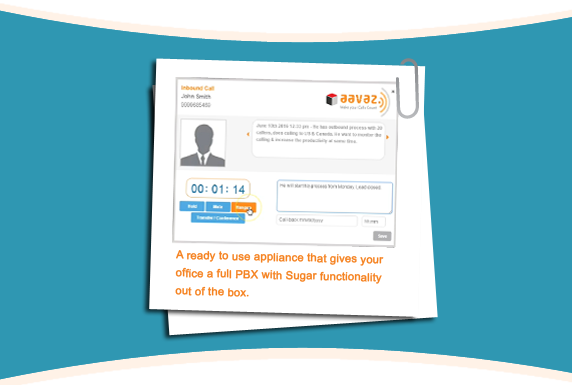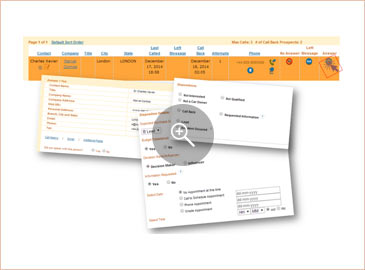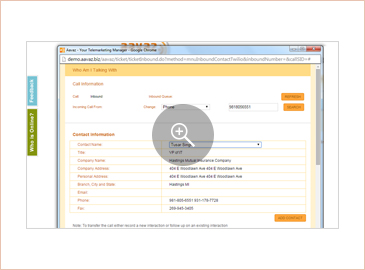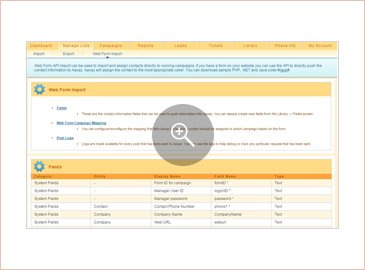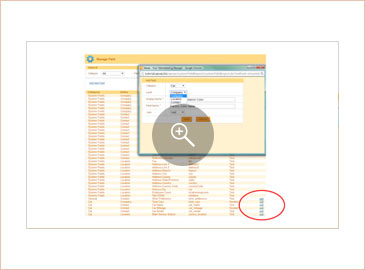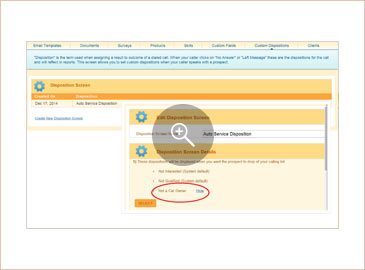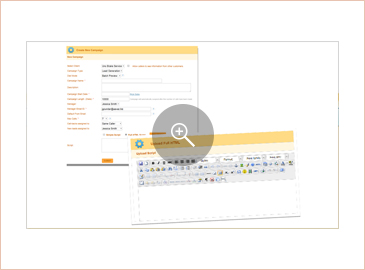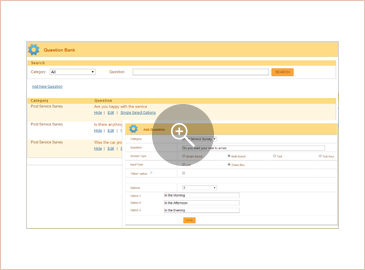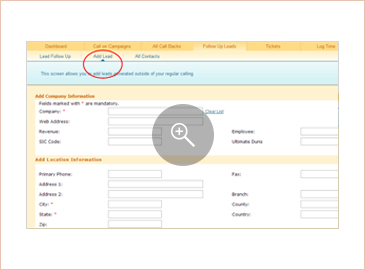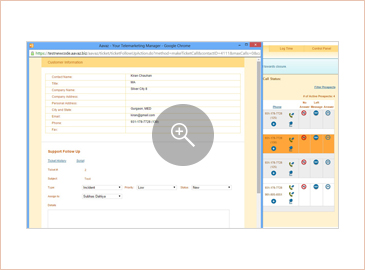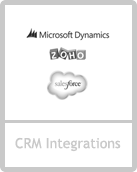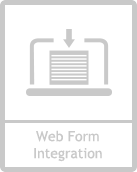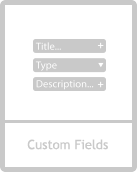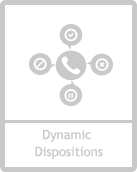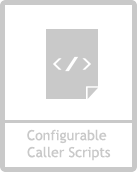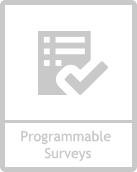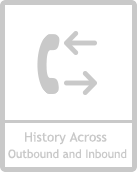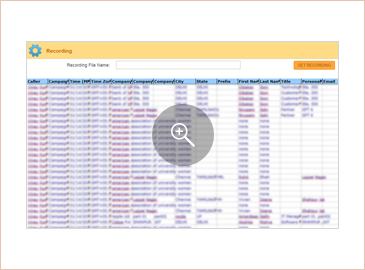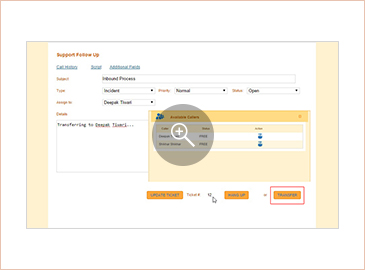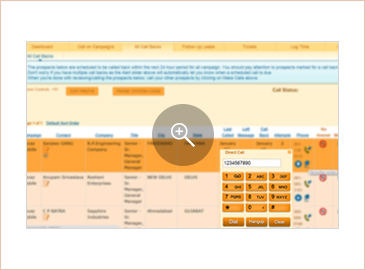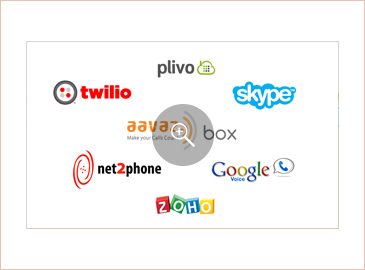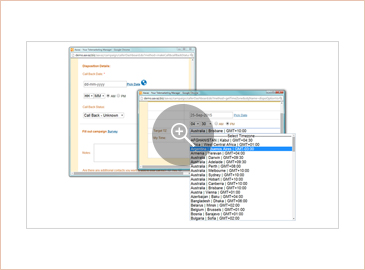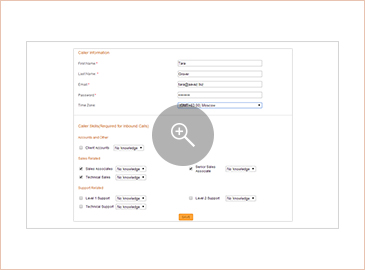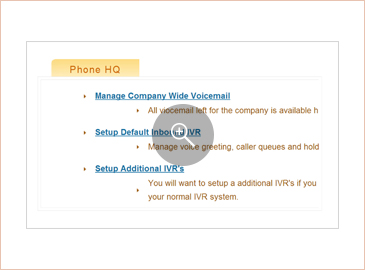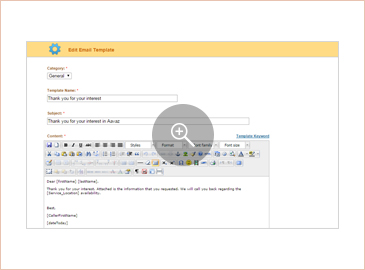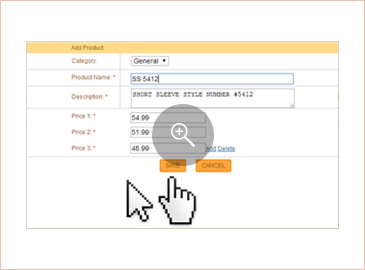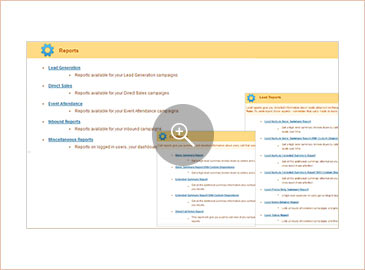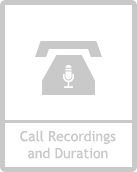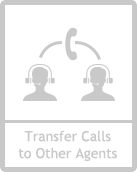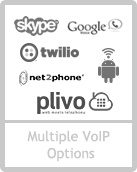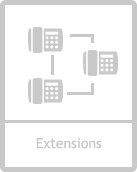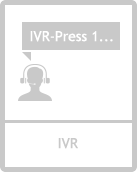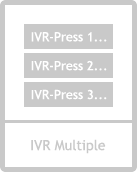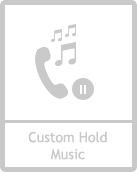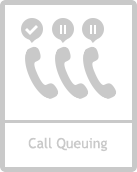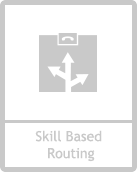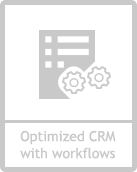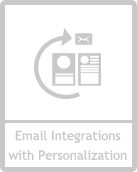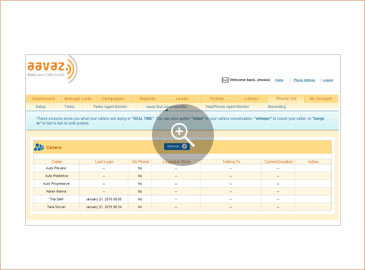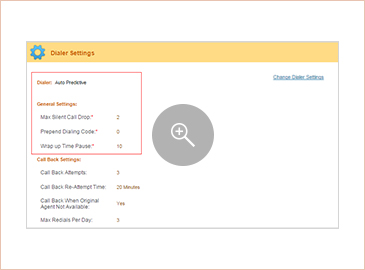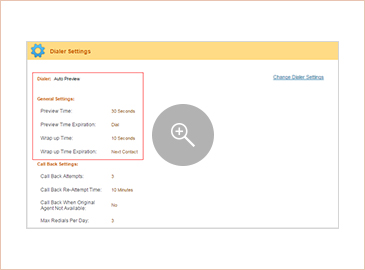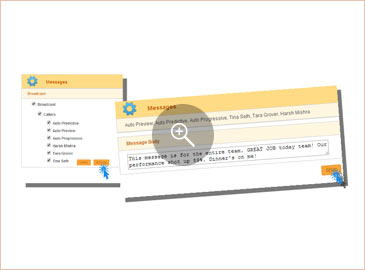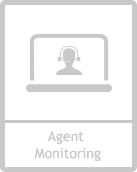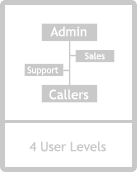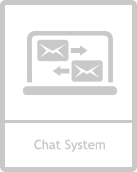This website uses cookies so that we can provide you with the best user experience possible. Cookie information is stored in your browser and performs functions such as recognising you when you return to our website and helping our team to understand which sections of the website you find most interesting and useful.

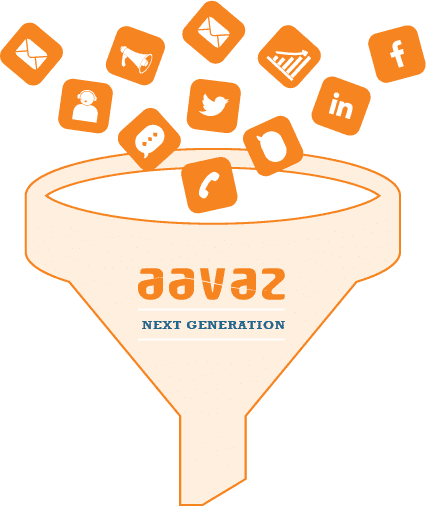
Unified Marketing, Sales and Support
on a Multi-Channel Platform

Request Demo
Intelligent Cloud Voice Ops Suite
With Aavaz, you get a voice operations suite. Not just a dialer, or a CRM, or IVR or a campaign manager.
It’s all one platform- built to make your process streamlined and simple…yet supercharged.
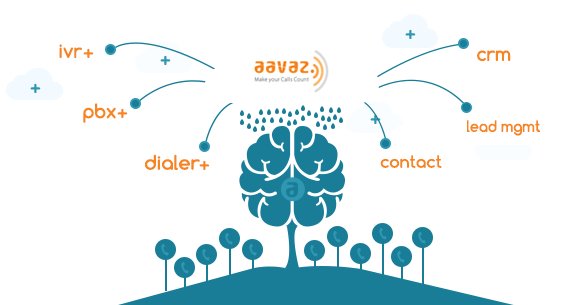
Answer some of our basic questions and watch our features light up
Marketing
Inbound
Office
1-10
Own
Aavaz Intelligence
-
Contact Managment
Capture lead categories, appointment follow up & lead classifications with Aavaz. You can assign contacts and lists by any which way your business process needs- territory, industry type, alphabetically, by income, or anything in between! Reporting on these metrics are also very easy with our detailed and summary excel reporting.
-
Screen pops for Sales and Support
-

CRM Integration
Have your leads automatically get pushed into SalesForce and Zoho from Aavaz. Let your callers efficiently call large numbers of prospects while your internal service teams work on your CRM without any polution of data.
-
Web Form Integration
Automatically have your web leads be assigned to a caller with Aavaz. No need to copy and paste information from your website to your calling system
-
Custom Fields
Aavaz is a product that is used across industries. A term that is used by the real estate agent will not be the same for a science research survey for example. We understand that- and for that reason- have the custom field feature for your convenience.
-
Dynamic Disposition
Disposition is the term used when assigning a result of a dialed call. Examples of dispositions are: no answer, left message & bad number. With Aavaz- you can assign dynamic dispositions based on rules or certain screens that you want. This screen allows you to set custom dispositions when your callers speak with a prospect.
-
Configurable Caller Scripts
Aavaz understands that without scripts, caller management would be difficult if not impossible. We have simple and Full HTML scipt option for you to upload and assign to your campaigns.
-
Programmable Surveys
From open ended answers to multiple selection questions- Aavaz also offers a versatile programmable survey option. All these questions are stored in our Survey Question Bank for as long as your account is open with us so you don’t have to keep creating new surveys every time. This is not only a time saver- but also- from a research standpoint- ensures consistency.
-
Built in Lead managment
Built in Lead Management could be anything from adding a new lead- editing the lead’s info, detailing out more information about an existing lead, following up on a lead or assigning it to another level of callers that are designated to pick up leads and convert them to sales. Aavaz is designed to keep things easy and efficient.
-
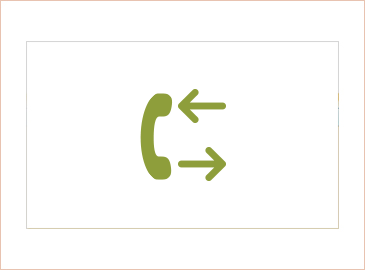
History across Outbound and Inbound
Aavaz can handle inbound calling, with voicemail, IVR, extensions, hold music, queuing and skill based routing for your inbound call needs. Your agents will have a screen pop with the person’s data and information when they are connected.
-
Lead Tracking Assignment
You can track your callers leads by pulling various levels of filters according to exactly how you want to view the details. Aavaz offers Caller level, Admin level, Sales level and Support level tracking and assignment for you to control.
-
Ticket Handling
-

Support Tracking and Assignment
Call Features
-
Call Recordings and Duration
A url that you can plug into your browser to listen to calls? With the right VoIP set up, this is completely possible and is being utilized often by our clients! Our reports show them call duration, and even call results. This allows you to see which callers are not talking long enough- or those that aren’t getting off the phone! Use Aavaz as an extension of yourself on the call floor!
-
Transfer Calls to other agents
Aavaz offers full PBX and Call Center facilities so that monitoring, queuing, recording and transfering your calls between different teams is a breeze.
-
Click 2 Call Dialer
Click a button to dial a pre-loaded phone number OR manually dial through Aavaz (requires VoIP set up). It’s as easy as it sounds!
-
Multiple VoIP options
Aavaz offers multiple VoIP options for your business needs. Don’t see your preferred partner here? No problem- call us and we’ll be happy to set it up!
-
Timezone Scheduler
Ever been on those calls where you’re not sure when to schedule your call exactly because of a large time difference? We have- so we installed a time zone scheduler wherever appointments and call backs are meant to be scheduled within the platform. You’ll love this feature as much as we do.
-

Extensions
With Aavaz- you can set up extensions through our virtual PBX! We offer a comprehensive range of features that encompass IVR, PBX, Hold music & Voicemail.
-
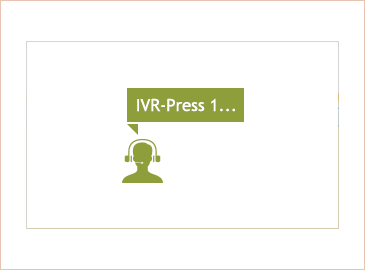
IVR
Record messages, hold music per person/agent in your company. This will help your company’s appearance look professional and organized.
-

Virtual PBX
Manage your extensions, voicemail, routing and transfers with Aavaz! We offer all the workings of a PBX system in a virtual environment so you can reduce your costs and vendor management time.
-

On Premise PBX
Can't use VoIP or already invested in PRI lines? Use the Aavaz box to manage your extensions, voicemail, routing and transfers with Aavaz! We offer all the workings of a PBX system so you can reduce your costs and vendor management time.
-
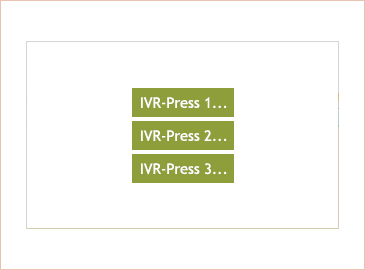
IVR Multiple
Have multiple phone numbers that are all incoming? No problem- you can set up multiple IVRs that cater to each phone number’s parameters.
-
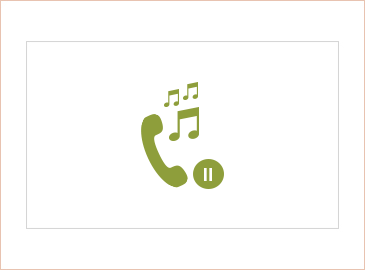
Custom Hold Music
-
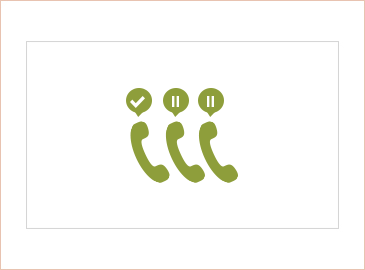
Call Queuing
You can set up your calls to queue, and custom messages or hold music will play while the call holds
-
Skill Based Routing
If you hire helpdesk and troubleshooting along with your usual sales and service team- you will love this feature! You can assign the skill set for each caller when you’re setting them up and accordingly- the inbound calls and IVR will queue for those particular skilled people.
-
Voice Mail
Set up voicemail, IVR, additional IVRs (for multiple numbers), night mode, day mode, and anything in between when you use Aavaz. Since we offer inbound and outbound calling- we can provide all these options for you.
-
Contact Managment
Capture lead categories, appointment follow up & lead classifications with Aavaz. You can assign contacts and lists by any which way your business process needs- territory, industry type, alphabetically, by income, or anything in between! Reporting on these metrics are also very easy with our detailed and summary excel reporting.
-
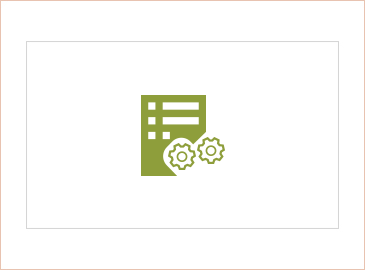
Optimized CRM with Workflows
Along with great usability, Aavaz understands that you might have your own work flows. We can (and have) partnered with a lot of our clients to customize workflows if deemed necessary. Call us- we’re up for anything!
-
Call Back Tracking
How many times have your callers forgotten to call a prospect back at an agreed upon time? That’s valuable data and sales that you might be throwing out the window. Aavaz was made for this type of scenario- not only do we have a cross-campaign tab for ALL call backs- we also have call back alerts.
-
Email Integration with Personalization
Aavaz has limitless options available for you to personalize and tailor your campaign to your (or your client’s) exact needs. From scripts, surveys, custom dispositions, custom fields, emails, documents, IVR—we have thought of everything you might need to have a successful calling operation.
-
Document
This is just ONE example of just how flexible Aavaz is. With YOU in mind- whether you’re doing retail, wholesale, inventory or anything in between- you can insert price levels to arm your sales people with bargaining power.
-
Insightful Report
The number of reports you can pull out of Aavaz are really quite impressive. Once you download the data, you can view and review it in as many ways as possible in order to get the most out of your campaigns, callers, list vendors etc. Aavaz provides reporting anywhere from basic summary reporting to detailed call reports for Lead Generation, Event Attendance, Inbound Reports, Direct Sales and misc.
-
Seamless “in app” call center functionality and native telephony integration is now possible with SugarCRM
Oakland, CA, January 31, 2018: Businesses can make and receive calls directly within Sugar, as a result of a native integration of Amazon Connect and Aavaz Call Center Accelerator. Aavaz has resolved a common issue for organizations and teams who make or receive a moderate to large amount of phone calls as part of their day-to-day business and use the Sugar platform to manage their customer relationships. When the telesales software and CRM are isolated instances, the task of maintaining clear and concise records of various customer interactions is a manual one, prone to error and more often, oversight. This in turn has a cascading effect on all follow-up activities and future interactions with the customer. In addition to a denigration of customer data/intelligence, having two siloed solutions is also more time-consuming and costly. The native integration of Aavaz Call Center Acceleration and SugarCRM bridges that gap by allowing customer service agents to make and receive calls through a “soft phone” while in their Sugar instance. The system automatically tracks and records all key metrics related to the call and allows the agent to instantly record notes and automate follow-up activity. This allows for a more holistic customer service experience, since callers can have unprecedented visibility into all aspects of a customer account. By automatically tracking and recording all metrics related to calls and cross referencing them to contacts, opportunities and tickets, this fully integrated platform speeds up outbound sales and marketing efforts and provides an overall increase in customer satisfaction for support operations. Aavaz/SugarCRM/AmazonConnect Add 1-1-1 The integration of Amazon Connect – a “contact center as a service” offering hosted in the Amazon Web Services (AWS) cloud – provides all the benefits of a cloud-based solution including no on-premise hardware, simple set-up and administration and an attractive “pay as you go” pricing model. In addition, Amazon Connect is a proven solution that has been used within Amazon’s own customer contact center for many years. The growing dominance of Amazon and AWS gives users the peace of mind that the solution is stable and dependable and will be well supported in the future. “This new integration is a significant expansion opportunity for SugarCRM and its customer base,” said Keith Mintzer, Executive Vice President at Aavaz. “Having the ability to tap into a premier cloud-based provider like Amazon offers tremendous value, and the seamless integration with the Aavaz Call Center Accelerator can greatly enhance the level of service, efficiency and functionality of any call-dependent organization.” To learn more, visit https://callcenter.aavaz.biz/sugar-crm-pbx-ivr-dialer.html About Aavaz: Aavaz (a division of Tekege Solutions Inc.), offers call center productivity tools and a Cloud Call Center Suite (CCCS). The Aavaz CCCS features enhanced dialers, IVRs and PBXs integrated with Contact, Lead and Ticket Management. Aavaz brings call center precision to the forefront and lowers call center set up and operational. Aavaz is the ideal solution for tele-sales, tele-support and telemarketing organizations requiring highly available and scalable systems. For more information visit: https://callcenter.aavaz.biz/. About Amazon Connect: Amazon Connect is a self-service, cloud-based contact center service that makes it easy for any business to deliver better customer service at lower cost. Amazon Connect is based on the same contact center technology used by Amazon customer service associates around the world to power millions of customer conversations. The self-service graphical interface in Amazon Connect makes it easy for non-technical users to design contact flows, manage agents, and track performance metrics – no specialized skills required. There are no up-front payments or long-term commitments and no infrastructure to manage with Amazon Connect; customers pay by the minute for Amazon Connect usage plus any associated telephony services. For more information, visit: https://aws.amazon.com/connect/. -
Auto Dialers- What is the difference between Predictive, Preview, Progressive and Power Dialers?
In a contact center, there are various critical functions playing their unique roles to optimize a business. Dialers play one such important role in the process. A business can benefit greatly with the use of a suitable dialer for its calling campaign given the cost savings from productivity increases alone.
The key is to determine which auto-dialer is the best option for your business, campaign or client’s needs. Driven with intelligence and advanced technology, Aavaz possesses a clear understanding of the growing needs of businesses. Here are some of the defining features of auto-dialers and how you might benefit from them:
 Predictive Dialer
Predictive Dialer
 What is a Predictive Dialer?
Predictive dialers use complex mathematical algorithms to determine precisely when to place calls, predicting completion of current calls and dialing the next before the agents are finished. With multiple dialer options, agents spend most of their time within calls rather than making them- increasing agent efficiency.
Who should use Predictive Dialers?
Predictive dialers are found to be very effective for large call centers and result, on an average, in better talk time per hour for the agents.
Who should not use Predictive Dialers?
We don’t recommend Predictive Dialers for small businesses who have calling campaigns with an agent pool under 15 people. Think of predictive as a large set of “intelligent” marbles that are thrown on the calling hemisphere and are collecting calls to immediately serve to an agent who is wrapping up their prior call. If you only have 15 or less agents- the predictive dialer will not work as efficiently because there isn’t a large enough group of calls for it to masterfully queue calls for 100’s of agents- like it’s supposed to.
In addition, we highly recommend checking the regulations from your specific country before you begin your purchasing process. For example- Ofcom of the United Kingdom, DNC of the United States of America etc.
Power Dialer
What is a Predictive Dialer?
Predictive dialers use complex mathematical algorithms to determine precisely when to place calls, predicting completion of current calls and dialing the next before the agents are finished. With multiple dialer options, agents spend most of their time within calls rather than making them- increasing agent efficiency.
Who should use Predictive Dialers?
Predictive dialers are found to be very effective for large call centers and result, on an average, in better talk time per hour for the agents.
Who should not use Predictive Dialers?
We don’t recommend Predictive Dialers for small businesses who have calling campaigns with an agent pool under 15 people. Think of predictive as a large set of “intelligent” marbles that are thrown on the calling hemisphere and are collecting calls to immediately serve to an agent who is wrapping up their prior call. If you only have 15 or less agents- the predictive dialer will not work as efficiently because there isn’t a large enough group of calls for it to masterfully queue calls for 100’s of agents- like it’s supposed to.
In addition, we highly recommend checking the regulations from your specific country before you begin your purchasing process. For example- Ofcom of the United Kingdom, DNC of the United States of America etc.
Power Dialer
 What is a Power Dialer?
While Aavaz does not offer this feature, a power dialer dials a list of numbers, one number instantly after the other. If a number is busy, disconnected, or there’s no answer, the dialer can immediately move to the next. This saves valuable time for agents.
Who should use Power Dialers?
Companies who are entering into outbound for the first time and do not have the capital to invest in a predictive dialing solution and/or do not want to go down the route of a hosted dialer
Who should not use Power Dialers?
Power dialing should not be used by someone who wants to run an event based campaign or for campaigns that require call-backs for nurturing leads. For eg: if you want to call 100 people for your event- out of the 100 people, you didn’t get through 10 people on the first time of calling. In this situation, a Power dialer will remove these 10 people from the list causing you to lose valuable information and leads and in the case of events- not allowing you to actually confirm attendance.
Preview Dialer
What is a Power Dialer?
While Aavaz does not offer this feature, a power dialer dials a list of numbers, one number instantly after the other. If a number is busy, disconnected, or there’s no answer, the dialer can immediately move to the next. This saves valuable time for agents.
Who should use Power Dialers?
Companies who are entering into outbound for the first time and do not have the capital to invest in a predictive dialing solution and/or do not want to go down the route of a hosted dialer
Who should not use Power Dialers?
Power dialing should not be used by someone who wants to run an event based campaign or for campaigns that require call-backs for nurturing leads. For eg: if you want to call 100 people for your event- out of the 100 people, you didn’t get through 10 people on the first time of calling. In this situation, a Power dialer will remove these 10 people from the list causing you to lose valuable information and leads and in the case of events- not allowing you to actually confirm attendance.
Preview Dialer
What is a Preview Dialer? In this dialer, the system is able to provide agents with information about the callers before a call is being made for the campaign. Things like call history, a website address, notes etc helps an agent to familiarize themselves with the customer’s history before they speak with them within a pre-set amount of time. An agent can be given 30 seconds to review the prospects information before the system starts dialing them automatically. Who should use Preview Dialer? This kind of dialer is essential in businesses focused in a dedicated customer relationship management and on agent efficiency. Who should not use Preview Dialer? Campaigns who need to make priority calls from a list will not benefit from this dialer. For example, an eCommerce company wanting to target a large segment of people with the same need (ie- buying shoes) will not benefit from preview dialing because their need is one and the same. There is little left to prioritize in that particular scenario.
Progressive Dialer
What is a Progressive Dialer? At Aavaz, we do not support progressive dialers. What progressive dialers simply do, is auto-dialing numbers one after the other, so that an agent does not have to manually dial the numbers. This will improve contact rates for your campaign tremendously. Predictive dialing is close to progressive dialing but they are not at all the same. Who should use Progressive Dialer? On completing the previous call, the system automatically dials the next number on the list. This removes the wait time between calls. This is ideal where the calls are very similar in nature and increases your campaign productivity significantly. Business to business sales campaigns would benefit significantly from using Progressive dialer. Who should not use Progressive Dialer? Sales and debt collection campaigns will not be able to benefit from the dialer due to its low talk time per hour rate. An agent using Progressive Dialer has to manually distinguish if the call is answered by an answering machine or a live contact, this is not suitable for campaigns requiring high contact rates from agents. We hope we’ve cleared some confusion for you. Any business equipped with these dialers can choose the right dialer for their needs and be well on the path to successful campaigning.
Sign up for more blogs like this one!
-
Advancing Cloud Technology Minimizes Human Resource and On-Premise Call Center Issues
Adopting new technology for large organizations requires preparation, rounds of discussion among department heads, trials and a paradigm shift in the existing system. Despite the challenges, the call-center model is changing from on-premise to cloud-based call technology. What may initially appear as an unwelcome disruption to the established process eventually becomes a pivotal improvement in call center operations. Mature technology streamlines existing processes to simplify employee supervision with virtually no change to call center management practices. The cost-benefit analysis of the cloud topples the existing dogma that employees must be on-site and visible to the managers. In turn, the supply of this old-model labor is dwindling while the talent pool remains enormously un-tapped. Two major concerns dominate call-center dynamics, whether cloud-hosted or on-site: ● Employee Acquisition, Retention and Attrition ● Beating Attrition with Alternatives that are Quick, Manageable and Reliable Employee Acquisition, Retention and Attrition 90% of call center managers identify costs and staff related issues as their biggest challenges. They have three primary concerns in maintaining a consistent, competent workforce: ● Turnover ● Manpower shortage ● Providing consistent training Beating Attrition with Alternatives that are Quick, Manageable and Reliable The cloud has long held the promise of addressing these issues, but faced the challenge of overcoming the notion among managers that they would lose control of the workforce and its output if they adopted cloud technology. Cloud call technology provides the tools necessary to maintain control through strong reporting and monitoring tools that are now available even for distributed centers. This technology provides three essential components to meet the traditional challenges of on-premise call centers: ● Easier than ever on-boarding ● Meeting quantitative goals ● Ensuring quality delivery This white paper addresses each of these on-premise problem areas and states the case for cloud operations as a solution to these problems. 1. Turnover With average turnover rates at a call center as high as 50%, the resources going into recruiting, on-boarding and training are 50% wasted and surrendered to attrition. Call centers have learned to mechanize and automate their business processes in anticipation of this waste. It is a part of their business model. Essentially, traditional call centers embed excessive business costs into their processes because they have to account for the fact that 50% of their employees will leave. Over-investments are made into employee insurance, travel arrangements to and from the centers, security, program installation, training, IT related activity (computer, usernames/passwords, computer hardware maintenance, system crashes etc), additional rental space and overstaffing of campaigns to ensure SLA’s are met. All these over-investments hurt the bottom line— and call centers are all about controlling the bottom line, both for their clients and their competitive edge. Lifestyle and career development issues contribute heavily to turnover. Employees typically change jobs for three reasons: ● Dissatisfaction with the workplace which manifests from co-workers and/or office politics ● Life changes like moving, getting married or relocating for a spouse’s career ● Vertical improvements within career such as promotions or salary increases Unlike the on-premise model cloud technology enables companies to offer employment opportunities that allow staff to remain on the job as their lives and circumstances change. “The average longevity of my staff with TSRI is over 5 years– something almost no other call centers could ever boast”- Rick Meares Additionally, cloud technology alleviates the manager’s challenge of scrambling to replace these employees. Hiring new employees can be done swiftly and without the stress of arranging travel, office orientation, equipment installation or any other typical office chores. A company can easily maintain a standby pool of employees for emergencies—think highly educated stay at home moms or physically disabled but perfectly call center-abled people who are waiting to turn their free time and talents to income. A variety of people would happily be associated with a call center if they were allowed to bypass the demands of commute and lifestyle by working from home. If an employer needs a common work environment for their staff – imagine a small center that requires only a Wi-Fi connection and basic laptops. This minimal investment was previously unimaginable as every center once required heavy investment in telephony and server equipment and faced issues with data silos. Now call centers can hire full time employees in these small centers that live outside of the typical call center locations such as Tier 2, 3 and even Tier 4 cities. Centers would be fully connected via the cloud to form a larger whole. Employers can challenge the norm by managing a (grateful) workforce remotely. Rick Meares, the founder and COO of TSRI in Florida and an early adopter of cloud call center technology, operates an entirely remote workforce of over 100 well-trained, full time stay at home employees says “The average longevity of my staff with TSRI is over 5 years– something almost no other call centers could ever boast”. His company has been operating this way for over 10 years and he sees no other way of conducting business than using cloud technology. 2. Manpower Shortage When call centers are limited to denser areas, the manpower shortage is more acute. In countries like the Philippines, India and other large call center locations, the demand is greater than the supply. Manpower shortages present themselves in many ways. Not every call center agent is the same. An employer may need specific skills in financial areas, or technical support or health care. There may be labor available, but without the right skills. The cloud enables managers to tap into skilled labor wherever it exists. The cloud also enables a workforce to scale on demand. As clients grow, campaign test metrics need proving or marketing campaigns cause a surge in call traffic, management is not limited to hire from the surrounding geographic area. 3. Providing Consistent Training Traditional training in business processes is cumbersome, involving complex software and complicated procedural requirements to safely store and exchange data. The advantage to using a Cloud-based model is two-fold: 1. Its cutting-edge technology automatically means better usability, making training and caller logic fool proof: ● Ease of use by natural virtue of newer generation technology The latest generation of cloud call center solutions requires almost no training and can work through a browser or mobile phone, on low-end configured laptops or even inexpensive Chrome books. Planned on-boarding sessions can easily be achieved with pre-recorded or live webinars. Business process training can also be done remotely. When moving to a distributed model, insist on the system that requires the minimum software overhead, as supporting a multitude of software can become tricky. The best in bunch literally work on a browser or Chrome book. 2. Cloud accessibility: on-demand training and remote monitoring make training attractive and more accurate for a manager and a caller ● Meets quantitative goals Quantitative reporting is crucial beyond measure to clients as well as managers who are running call centers and calling campaigns. With detailed call reporting, managers are armed with a viable account of metrics based on real activity. Detailed metrics like call length, and disposition can be gathered on the fly, making information gained more timely and therefore more valuable.. Quantitative reporting is the catalyst for quality assurance and SLA compliance. All campaigns fall into statistical norms when it comes to certain metrics. Experienced call center managers are good at being able to identify and spot issues that arise simply by looking at the numbers. For outbound campaigns, metrics can largely be divided into 3 large categories ● Dial metrics ● Call disposition metrics ● Performance metrics Dial metrics largely depend on the quality of the lists. These typically yield an overall indicator of dials per hour, good or bad numbers or answering machines – numbers that measure what happens before your agent speaks to someone. Call disposition metrics give an indication of how well the people on the list respond to the message being delivered; and performance metrics give an indication of how well the caller is achieving the high level goal of the campaign -whether appointments per hour or event registrations per day. A simple example: If calling businesses, then most calls will be answered. Limitations naturally fall at a max of about 30 calls an hour. Consumers on the other hand can vary a lot more. When cold-calling [or dirty-dialing] out to unknown numbers – the number of dials could be very high, with a much smaller number of connects. All call center systems should provide these metrics. But with the real-time, tight integration between the voice carrier technology and the contact management, cloud call systems leave the on-premise model in the dust when it comes to catching problems- as they are actually occurring. No time is wasted walking around and listening to agents. Instead, a manager’s valuable time is spent processing the results and addressing the problem areas the technology identifies. ● Ensures Quality Delivery According to FlexJobs.com, “regular telecommuting grew by 79.7 percent between 2005 and 2012, and that doesn’t even count people who are self-employed and working from home”. Often, and understandably, the biggest barrier to transforming operations from on-premise to cloud is the failing to understand that statistics prove that telecommuting is on the rise without detriment to business operations. Businesses that discount this trend lose ground to those who accept it. Quality delivery depends on quality hiring. Cloud technology expands the labor pool beyond the geographic area. Good hiring must include interviews on the phone: a perfect opportunity to judge a candidate’s phone manner and learning-curve on the software with screen share; and to record their disposition for your boss to approve; and to monitor their phone disposition. A hiring manager wouldn’t have to worry about much else. Quality control for the typical on-premise call center depends on he wasteful practice of several managers listening into live calls. The better way is to review the quantitative reports and identify metrics that don’t fit the statistical norm. Cloud call centers have evolved to allow for managers to listen, whisper or cut in to live calls to fulfill the needs of the old ways But the greatest value of cloud technology is the ease and speed it offers managers in identifying problem areas. Once identified, they can dig up the detailed call reports or listen to the recordings of the particular campaign or caller in question. The recordings and metrics point to the solution whether it’s training, tweaking the message, or some other solution. Good detailed call records, that are easy to access and even easier to share also solve customer disagreements. When the client feels that certain SLA’s are not being met, the reports and recordings help to have meaningful discussions with real metrics and real live information that help to resolve matters quickly. Conclusion Cloud call center software helps alleviate attrition and manpower shortages by offering advantages unavailable to on-premise centers. The rapidly advancing technology presents the ability to run extremely detailed quantitative reports with recordings as well as live monitoring. This combination delivers a higher level of performance and more flexible, agile solutions than the traditional on-premise model. The question of converting operations has been answered. Cloud technology is inevitable and evolutionary. With limited barriers to entry- it is a no brainer. Don’t get left behind. -
3 Reasons For Cost-Conscious Business Owners To Stop Using Excel For Telemarketing – Hint: It’s Expensive
I own a business (in-fact, a few). Costs are a real challenge for me because I am constantly playing the push and pull game with money. Thoughts like “should I hire people now to be ready for more business in the future or should I save money and scramble when business comes” are constantly doing their rounds in my mind.

I know you all relate. I haven’t yet met an entrepreneur who hasn’t faced these cost challenges. So when it comes to identifying and then purchasing cost-efficient tools for the long run like telemarketing software, I totally get why business owners hesitate. You see, Aavaz is one of those products that is either the easiest sale or a really, really, really tough one. Here’s why--
Some business owners simply don’t understand the real costs associated with their existing system - be it MS Excel or something more exotic (We’ve seen people using paper and pen for tracking!).
They’re busy and are afraid of wasted time doing research and afraid of incurring more wasted time implementing a new system. With time being the most precious (and scant) commodity there is…I understand this challenge. I have addressed this with some pretty cool tips here https://bit.ly/16wNg49. But they’re doing themselves a disservice by not taking the time to truly understanding the cost-savings that are actually possible which is what I’d like to discuss now.
There are 3 major cost savings associated with switching to a more efficient software because you will:
1) Save on Callers
2) Save on Process
3) Save on Leads
1) Save on Callers:
Let’s face it. Callers come and callers go. Calling isn’t the most attractive career in the market and few have the aptitude and persistence for it, which means hiring, training and re-training is an extremely expensive proposition. Aavaz is designed to be simple, intuitive, effective and best of all VIRTUAL. You can hire less expensive callers from anywhere in the country (Alaska). Train them in minutes and not worry about the commute being a reason for them to quit. (Secretly) track every single click, call and sneeze to ensure quality (oh….and don’t worry if they do want to go, you’ll be able to transfer their work to someone else in Alaska in a minute……more on that later)
2) Save on Process:
As a business owner, you have to know everything about your business. But do you really want to know the best practices of surviving effective calling campaigns. Do you want to spend time learning/discovering that, and then teaching every caller, that you must enter data in Excel like so. It doesn’t work, even if you get it, the callers won’t. Aavaz is designed with industry best practices, your callers don’t even know it, but are calling like professionals from the minute they get on. You don’t have to learn/discover anything other than know that yours saving big on time, money and cost per lead.
Did you know that 7 is the industry recommended number of times that you should attempt to dial someone before giving up?
3) Save on Leads: The most important metric you have for your calling campaigns in “cost per lead”. You pay money to get a list of prospects (or spend time mining them). You pay money to hire and train callers. You pay the telephone company for talk time and your callers by the hour to generate leads. You call hundreds of prospects to get a few leads. These leads are expensive; they’re like nuggets of gold. Do you want to lose them because your caller (in Alaska) decided to quit or forgot to track, or corrupted their Excel workbook. You want every single call-back, appointment and hick up tracked and followed up on, even if California sank into the Pacific Ocean.
I could go into 158 more reasons why you should switch... Interested in more? Send me an email or reach me at https://callcenter.aavaz.biz/contact.html and we can talk at length about why I think you should switch to Aavaz.
Happy Savings!
[xyz-ihs snippet="Founder"] -
How to lock your customer in for life

“THE WAY TO CUSTOMER’S HEART IS THROUGH GOOD PERSONALIZED CUSTOMER SERVICE.”
April 29, 2019 No CommentsRetaining over reining in
Don’t just read the articles that tell you how to reel in customers. Put the tips in to practice by performing A/B tests on multiple channels and find the right one to nurture your leads towards conversion. The more attention you give, the more conversions you get.Building connections everywhere
At different stages of a customer’s journey, a company requires different channels to communicate and connect. Website tracking to get insights on a prospect, chat systems to break the ice with a lead, voice to close the deal, and email to ensure reliable support; all are used to connect with people in a better way. Because connections make businesses…oh, and it helps to have marketing, lead tracking and ticketing baked right in.Linking and passing notes
Multiple channels means a headache to keep eyes on things. Establishing links between various mediums is rewarding, but time-consuming. Especially, when the support team has next to no clue about customer conversion, and the sales team has to pass notes on the same.The little things that matter
Seeing and working towards the bigger picture is well and good. However, when it comes to maintaining relationships with customers, it is the little things, that matter. Highly configurable CRMs often fail due to complexities; however specialized tools work their charm every time.Different, yet the same
Multiple contact channels provide overlapping functions which provide a lot of similar information that is repetitive and time consuming to segregate. If only this information could be collected in the system, analyzed and listed out efficiently by a single, offer it all CRMDialogue is the cure
Any problem will seem trivial with conversations. If they are coupled with context, a useful reflection and recording the right metrics, the result will be all channels working together in harmony.Sell it when you love it
Selling a product or service for its benefits is not enough. For it to affect customers positively dogfooding is essential, and that is what we did. The result? We love it, and we know, for a fact, that you will too.Effective changes
Hard work pays off and so did ours. The unified approach to contact channels has led to one system and one login. Sales team no longer scramble for customer information for monitoring activities is, now, easier, allowing them to efficiently serve the customers.There is more…
Nothing will limit growth if one is motivated, and we are very much so. Our framework allows the inclusion of new channels of communication. Keep a lookout, for there is more to come. Visit us at: https://aavaz-contact-center.com -
The why and how of achieving truly unified and multi channel communication
Everyone is talking about being able to communicate with your customers in an omni or multi-channel world. A lot of you are probably doing multi-channel already (Albeit in a less than efficient manner). All this has come about due to the truly multi-channel world that we live in. The evolution from in-person face to face then to voice contact via phone calls, to email, to web, to web chat, to social media, to SMS and other messaging platforms. Add to this the customers evolution who now not only expects to be able to reach out to you via the most convenient channel, but also then expects that you and your agent knows exactly who they are and deliver customized and tailored service as a base standard of service. The days of of the call center are gone and we are now looking at the contact center. This contact center must be able to hold conversations (A key theme) across channels, and across the customers life cycle. This series of blogs is going to explore the promised land of why this is necessary and how you can go about achieving this. But before ping into how, it is first important to establish the why. Why? Customers are spoiled for choice. Doesn’t matter how big or small you are. Whether you’re a recognized or brand or not. There are enough choices available to your existing or potential customer. In a study done by a company 94% of customers are willing to switch if they don’t get good customer service and 84% feel that good customer service means that they should be able to reach you in any channel they feel is most comfortable to them. But you don’t need studies to tell you this. There is plenty of anecdotal evidence that shows that brands can be created and destroyed by customers on social media. They like they say good things about you, they don’t they say bad things. You need to be able to respond to them on social media, and more importantly before they get to the point of commenting on social media (unless it’s good things of course). Let’s look at the typical customer journey from cradle to grave. Awareness….So much of it is out of your control, but what is under your control, you have a …what is very strongly under your control is their interactions at the most critical points, becoming a customer, and staying a customer. And these points are controlled directly with human interactions that people in your company have with them. Customer Journey, Customer Success, Service. Here’s what typically happens in those scenarios. Your marketing team is using several different marketing tools to reach out to your customers. Each marketing tool is good for 1 channel. Email blasts from mail chimp, social media from hubspot, XYZ for web tracking. If you’re lucky and have spent a lot of time, somehow when one of these customers responds to you, you’ve captured it in your CRM…and trust me that requires a lot of work to get right because of the coordination between your web team, your sales team, the crm people, the integrators and 15 other people. That’s not the end. Now that someone has managed to reach you, your qualification or sales team has to reach out to them. They reach out by sending a personal email, or maybe a drip marketing system you’ve got in place or some plugin you’ve added to your CRM, creating yet another break in the traceability of your marketing efforts. Now they make a call, and MANUALLY are supposed to enter details into your CRM or lead tracking system. As managers we know how painful that is to sales people and how quickly all you’re doing is chasing up on people not following process that you’ve spent so much time defining. Let’s fast forward and hope that the prospect has converted to a customer, and now is requesting support from some you. Your ticketing system and thus agents have no idea what the original customer success parameter was for this customer. Customer has to spend all the time in explaining what they want and how they want it. To top it all off….let’s say that you’ve reached the promised land of getting visibility from cradle to date or grave for a customer and all your touch points. You’ve now created a system that is extremely hard to manage, requires a lot of thought for any changes and is extremely brittle, so when you’re facing a forced upgrade from your phone system vendor a 5 person team and countless hours have to be dedicated to make that change happen. You’re focusing on spending time on building systems and not on customers. Tools should not be a hindrance to great customer service. Tools should not be a hindrance to managers and to agents. You can have the best intentioned managers and agents with great training, but if you give them a hammer instead of a drill they’re not going to be successful in making your customer and you successful. We have studied this problem thoroughly for many years and have taken the view that your traditional CRM is a hammer. Because it was designed when communications were not as varied and integrating even voice was extremely difficult and expensive. CRM’s have a data first approach and suffer from getting people to enter data from communications that are the actual key to making sales and support interactions successful. Aavaz has taken a Communication first approach. With this approach the data is automatically captured as all communications are happening through the CRM and thus data is being captured by default. Now your people are adding flesh to the communications data, and not the meta data like when it happened, what was the outcome. In fact because that is being captured automatically, your agents are now compelled into adding (efficiently) the colour that is really helping the customer and your business. DIAGRAM We said let’s do a true tool and in that communications first approach we discovered that it was all about your conversation with your customers that makes things work. Conversations that are great in todays world require a multi-channel approach with the ability to create a context for the various conversations that you have with your customers over time. We know that contact with your customers is where the rubber meets the road. Good contact works, let’s not be afraid of it, let’s encourage it from our customers. This series describes our journey to our product that is working for us. I know we’re supposed to write this in a neutral way, but I can’t be neutral on what we’ve built and am eager to share the problems, the insights and the solution that we’ve come up with. The solution truly gives me goose bumps. This series will give you insights into: * Our journey, and how we ate our own dog food * Truly integrated marketing, digital and traditional * Sales as the key pivot point in setting up your customers success * Support that makes customers happy and coming back for more (Upselling, remarketing) * And The Unified Difference – It doesn’t work if it’s not unifiedTHE WHY AND HOW OF ACHIEVING TRULY UNIFIED AND MULTI-CHANNEL COMMUNICATION
April 29, 2019 No Comments -
Why Cloud Telephony Is Critical for Your Business
If you’re still relying on clunky on-premise business communication products, you must consider upgrading to cloud based software solutions. Many small and large businesses have already made a logical switch from their old hardware-based phone systems to cloud based communication solutions. When your hardware-based phone systems crash, you are left with no other choice but to wait for your service provider to visit business premises and fix the issue. This may eat up your several hours and money, for that matter. With a Cloud telephony service contract, you can easily make changes and repair your phone system remotely without wasting much time.Understanding Cloud Telephony?
Cloud telephony is a virtually hosted system that converts a regular business phone system into a business phone system stored on the cloud. Every single call that your business receives gets routed via Cloud Servers. You can store all the critical data like customer databases on the cloud, which you can access by a mobile or a web browser anytime you want. A cloud based phone system enables you to make customer calls through a web browser or a mobile app. You can easily manage both inbound and outbound calls with your customers through it.How does Cloud Telephony work?
Cloud telephony offers a quick and easy way of communicating with your customers. The process works simply:- You dial the desired phone number, and then you wait for the service provider to handle the call routing.
- Your voice signals get converted into data packets and transferred through your internet connection.
- You can connect with your caller through phone or computer and kick start a productive call.
Benefits of Cloud Telephony to Small Businesses
Cost Savings
Cloud telephony enables you to save not only your precious time but also money. Unlike its modern counterpart, the traditional landline phone system involves expensive hardware, installation, and maintenance costs. Also, cloud telephony systems don’t take up your office space as everything stays safe in one place i.e.on your employee’s laptop. With a cloud-based telephony system, there’s nothing like long-term fixed deals. It’s all about flexible payment schedules. Therefore, the nature of the agreement of cloud-based phone systems is flexible and requires no unexpected or additional costs.Resilient & Reliable Phone Service
Disaster recovery is easy with cloud telephony systems. You can stay calm even if a natural calamity hits your area, as all your business information is safe and secure on cloud storage. Additionally, you can also access your business information from any other device at any point in time. In contrast, your traditional desk phone systems and office desktops are highly likely to be affected by a natural disaster.Minimum Downtime
What's worse than your phone system going down and you cannot make important calls to the customers, especially if you are into the business of providing phone support to your customers? Possibly, nothing! When you use a Cloud telephony system, you are sure that you will get the maximum up-time available. If there's anything wrong with your system in the Cloud, you can take the help of your service provider to get it up and running in no time.Allow Scalability of business Operations
The nature of modern-day business is dynamic as any new need can arise anytime. For instance, SaaS products remain relevant if they offer quick customizations and updates; else, they become waste. That's not the case with cloud telephony solutions. They are highly customizable and scalable. Whether you are considering adding new people to the cloud telephony account or thinking of adding new customized features for making your CRM integration go smooth, cloud telephony covers it all.Constant Updates
When you move all your business communication systems to cloud telephony, you end with the possibility of the service getting old-fashioned with time. With a properly hosted cloud-based phone solution, all the innovations occurring in the technology domain related to your business get updated in your particular communication system. This saves your time and efforts of constantly manually updating your business phone system and allows you to focus on other core business areas.Mobility & Flexibility
Suppose you are waiting for a prominent call from a customer, so you can finally crack a crucial deal. With a landline phone system, the waiting time is unpredictable, and you can’t stay back in the office to take the call. In the case of cloud telephony, you are free to leave the office and get the task done from anywhere. You can have your dinner and still make a deal as you have instant access to your business contacts.Integrated Business Communication Systems
Cloud telephony solutions seamlessly integrate with your business communication systems and workflows.such integration not only your team’s work pipelines but also ensures smooth workflow from a larger perspective. These streamlined workflows allow you to access every detail in a single interface.This way, your team will be able to work efficiently and deliver exceptional results in less time.Better handling of business Communication
With traditional desk phones, you are not able to keep track of your comprehensive business communications. You don’t have the record of client conversations, making it difficult for you to manage information flowing inwards and outwards. The call recording feature of cloud telephony gives you complete control of your overall business communications. It gives you the record of everything; you can use call recording for reference or issue redressal at any point (if required).Highly Efficient Sales and Support
The Auto Dialer feature of cloud telephony enables you to make calls, leave voicemails, eliminating the need of a support agent to be involved in any part of this process. Additionally, there’s a feature to add end call disposition notes, making the manual work of support agents almost zero as they can now get quick notes of the call’s outcome. Therefore, you are highly likely to experience a boost in productivity and efficiency in your customer support team. If you’re still perplexed about whether to make a big move of switching to cloud call center technology or not, you need to further explore the key benefits of switching to cloud call center solution.Conclusion
Cost savings, increased reliability, convenience, and scalability are key reasons that make businesses switch to cloud telephony systems. Now that you already know about the cloud telephony concept and the benefits it has to offer to your business, there’s just one thing left for you to do: Migration of your business telephone system to cloud telephony. -
The Significance of a Smooth Customer Call Experience
Phone calls are most likely the first point of contact for your customers. These interactions count a lot as they can make or break your reputation in the market. Smooth conversations have great chances of conversions. By smooth we mean, a conversation that flows back and forth naturally and fulfils the objective of a call where both the parties have been heard and understood clearly. Phone calls are a vital part of your customer success operation. Every interaction that your support team has with your customers gives them insight into what kind of company you are. No matter how well versed or soft-spoken your sales or support teams may be in offering a healthy customer experience, there's always a scope for improvement. Keeping this in mind, let's unveil the role phone calls play in ensuring a great customer experience, why they make for an essential part of your customer support, and how to improve your overall phone experience.How Crucial is the Role of Phone Calls in the Customer Experience
The time that your customer support and sales team devote to phone calls with your customers shapes the overall customer experience. Let's dig deeper into the definition of the phone experience. The Phone experience involves each and every call and interaction that your customers experience with your business throughout their journey from the first call to the most recent interaction overall. In short, the phone experience is what your customers perceive about your brand image after talking to your customer support representative. The simplest way to enhance your phone experience is by moving to a cloud-based phone system. It enables you to integrate diverse communication channels such as email, instant messaging, and chat with your phone systems so that you can reach out to your customers in their preferred communication modes. Studies indicate that more than 50% of the customers prefer to reach out to customer care executives by phone to resolve their queries if the matter is urgent. This is the perfect opportunity to add one more happy customer to your list of testimonials by offering a seamless phone experience to your customers. Most of the time, these customers turn into loyal customers, and you get business through these word-of-mouth recommendations.What Makes for a Good Phone Experience?
It is apparent that your customer support teams need to have good business phone etiquettes to handle the toughest calls like a breeze. They need to be soft-spoken and polite at all times. However, there are more ways to serve your customers better. One of those ways is to empathize with them and respond according to the way they think, feel, and behave. With the right technology and workflows, you can deliver exceptional customer experiences every time and set the stage for generating higher revenues as customers tend to pay more for great customer service.Quick Ways to Improve Your Overall Phone Experience
Inbound and outbound calls are a platform through which your call center can build lasting impressions on your customers. Staying in touch with your customers allows you to build long and healthy relations. Ensuring improving overall phone experience is a first step towards securing growth for your company.Here's what you need to do to improve your phone as well as customer experience:
- Empower your sales and support representatives with the right call center solutions to offer personalized customer experiences in addition to training your support representative with the right calling strategies..
- Identify your target customers and understand why your product or services are crucial to them.
- Switch to a cloud-based phone system to monitor your call center's performance by leveraging dashboard analytics.
- Set up call metrics like first call resolution, average call length, conversion rate, wait times, average wait times, average speed of answer, etc. Feel free to add new metrics that will help evaluate customer experience better.
- You can use CRM integrations to merge all customer information into a single piece of information.
- Adhere to best practices for conducting call center training.
- Ensure your customer support representatives are highly trained in a variety of technical and soft skills.
- Never miss an opportunity to strengthen customer relationships by continually working on it. You can try setting up a workflow for outbound calling even when your customers are not reaching you. The best way to achieve this is by offering them sales promotions and product information about the products that they've expressed interest in the past.
- Always ensure that you are training your customer support representatives to take feedback from your customers during calls and timely convey their comments to the center managers. Your work shouldn't stop here; you should also implement changes as per customer feedback.
Additional ways to Improve the Customer Phone Experience
- Add the power of industry-leading call center software that supports software integrations for customer support
- Use call recording feature to analyze calls and identify issues
- Train call centers on live calls by using call listening/whispering features
- Analyze calls with transcription software and get valuable insight
- Explore omni channel communication capability of call center software
- Use sales software to reduce the sales funnel
- Get instant customer feedback by using automated surveys
For Larger Teams
-
Live Agent Monitoring
Once you’re set up with a calling system, you can log in as an admin to see who is online and simply listen, whisper or barge in to talk to either the caller or both parties. This is a great way to not only train your callers- but also to keep an eye on their activities.
-
Predictive Dialer
With the convenience of a predictive dialer-save valuable agent time with the help of our predictive dialer!
-
Preview Dialer
Let Aavaz do the dialing for your callers! They will have a chance to review the person’s information for a certain limit of time (set by you) before they are connected.
-
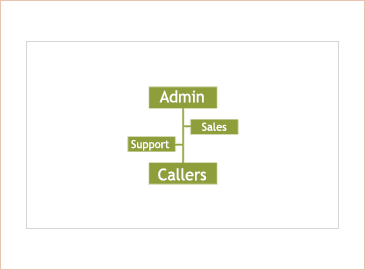
4 User Levels
-
Chat System
Once you’re set up with a calling system, you can log in as an admin to see who is online and simply listen, whisper or barge in to talk to either the caller or both parties. This is a great way to not only train your callers- but also to keep an eye on their activities.
Call Center
-

Unlimited Data
Unlike our competitors, we have no limits to the number of data or the time frame in which we store them.
-

Scalable
Aavaz can be used for 1 agent up to n agents. We are confidently handling several call centers right now.
-

Unlimited Contacts
Unlike our competitors, we have no limits to the number of contacts or the time frame in which we store them.
-
Seamless “in app” call center functionality and native telephony integration is now possible with SugarCRM
Oakland, CA, January 31, 2018: Businesses can make and receive calls directly within Sugar, as a result of a native integration of Amazon Connect and Aavaz Call Center Accelerator. Aavaz has resolved a common issue for organizations and teams who make or receive a moderate to large amount of phone calls as part of their day-to-day business and use the Sugar platform to manage their customer relationships. When the telesales software and CRM are isolated instances, the task of maintaining clear and concise records of various customer interactions is a manual one, prone to error and more often, oversight. This in turn has a cascading effect on all follow-up activities and future interactions with the customer. In addition to a denigration of customer data/intelligence, having two siloed solutions is also more time-consuming and costly. The native integration of Aavaz Call Center Acceleration and SugarCRM bridges that gap by allowing customer service agents to make and receive calls through a “soft phone” while in their Sugar instance. The system automatically tracks and records all key metrics related to the call and allows the agent to instantly record notes and automate follow-up activity. This allows for a more holistic customer service experience, since callers can have unprecedented visibility into all aspects of a customer account. By automatically tracking and recording all metrics related to calls and cross referencing them to contacts, opportunities and tickets, this fully integrated platform speeds up outbound sales and marketing efforts and provides an overall increase in customer satisfaction for support operations. Aavaz/SugarCRM/AmazonConnect Add 1-1-1 The integration of Amazon Connect – a “contact center as a service” offering hosted in the Amazon Web Services (AWS) cloud – provides all the benefits of a cloud-based solution including no on-premise hardware, simple set-up and administration and an attractive “pay as you go” pricing model. In addition, Amazon Connect is a proven solution that has been used within Amazon’s own customer contact center for many years. The growing dominance of Amazon and AWS gives users the peace of mind that the solution is stable and dependable and will be well supported in the future. “This new integration is a significant expansion opportunity for SugarCRM and its customer base,” said Keith Mintzer, Executive Vice President at Aavaz. “Having the ability to tap into a premier cloud-based provider like Amazon offers tremendous value, and the seamless integration with the Aavaz Call Center Accelerator can greatly enhance the level of service, efficiency and functionality of any call-dependent organization.” To learn more, visit https://callcenter.aavaz.biz/sugar-crm-pbx-ivr-dialer.html About Aavaz: Aavaz (a division of Tekege Solutions Inc.), offers call center productivity tools and a Cloud Call Center Suite (CCCS). The Aavaz CCCS features enhanced dialers, IVRs and PBXs integrated with Contact, Lead and Ticket Management. Aavaz brings call center precision to the forefront and lowers call center set up and operational. Aavaz is the ideal solution for tele-sales, tele-support and telemarketing organizations requiring highly available and scalable systems. For more information visit: https://callcenter.aavaz.biz/. About Amazon Connect: Amazon Connect is a self-service, cloud-based contact center service that makes it easy for any business to deliver better customer service at lower cost. Amazon Connect is based on the same contact center technology used by Amazon customer service associates around the world to power millions of customer conversations. The self-service graphical interface in Amazon Connect makes it easy for non-technical users to design contact flows, manage agents, and track performance metrics – no specialized skills required. There are no up-front payments or long-term commitments and no infrastructure to manage with Amazon Connect; customers pay by the minute for Amazon Connect usage plus any associated telephony services. For more information, visit: https://aws.amazon.com/connect/. -
Advancing Cloud Technology Minimizes Human Resource and On-Premise Call Center Issues
Adopting new technology for large organizations requires preparation, rounds of discussion among department heads, trials and a paradigm shift in the existing system. Despite the challenges, the call-center model is changing from on-premise to cloud-based call technology. What may initially appear as an unwelcome disruption to the established process eventually becomes a pivotal improvement in call center operations. Mature technology streamlines existing processes to simplify employee supervision with virtually no change to call center management practices. The cost-benefit analysis of the cloud topples the existing dogma that employees must be on-site and visible to the managers. In turn, the supply of this old-model labor is dwindling while the talent pool remains enormously un-tapped. Two major concerns dominate call-center dynamics, whether cloud-hosted or on-site: ● Employee Acquisition, Retention and Attrition ● Beating Attrition with Alternatives that are Quick, Manageable and Reliable Employee Acquisition, Retention and Attrition 90% of call center managers identify costs and staff related issues as their biggest challenges. They have three primary concerns in maintaining a consistent, competent workforce: ● Turnover ● Manpower shortage ● Providing consistent training Beating Attrition with Alternatives that are Quick, Manageable and Reliable The cloud has long held the promise of addressing these issues, but faced the challenge of overcoming the notion among managers that they would lose control of the workforce and its output if they adopted cloud technology. Cloud call technology provides the tools necessary to maintain control through strong reporting and monitoring tools that are now available even for distributed centers. This technology provides three essential components to meet the traditional challenges of on-premise call centers: ● Easier than ever on-boarding ● Meeting quantitative goals ● Ensuring quality delivery This white paper addresses each of these on-premise problem areas and states the case for cloud operations as a solution to these problems. 1. Turnover With average turnover rates at a call center as high as 50%, the resources going into recruiting, on-boarding and training are 50% wasted and surrendered to attrition. Call centers have learned to mechanize and automate their business processes in anticipation of this waste. It is a part of their business model. Essentially, traditional call centers embed excessive business costs into their processes because they have to account for the fact that 50% of their employees will leave. Over-investments are made into employee insurance, travel arrangements to and from the centers, security, program installation, training, IT related activity (computer, usernames/passwords, computer hardware maintenance, system crashes etc), additional rental space and overstaffing of campaigns to ensure SLA’s are met. All these over-investments hurt the bottom line— and call centers are all about controlling the bottom line, both for their clients and their competitive edge. Lifestyle and career development issues contribute heavily to turnover. Employees typically change jobs for three reasons: ● Dissatisfaction with the workplace which manifests from co-workers and/or office politics ● Life changes like moving, getting married or relocating for a spouse’s career ● Vertical improvements within career such as promotions or salary increases Unlike the on-premise model cloud technology enables companies to offer employment opportunities that allow staff to remain on the job as their lives and circumstances change. “The average longevity of my staff with TSRI is over 5 years– something almost no other call centers could ever boast”- Rick Meares Additionally, cloud technology alleviates the manager’s challenge of scrambling to replace these employees. Hiring new employees can be done swiftly and without the stress of arranging travel, office orientation, equipment installation or any other typical office chores. A company can easily maintain a standby pool of employees for emergencies—think highly educated stay at home moms or physically disabled but perfectly call center-abled people who are waiting to turn their free time and talents to income. A variety of people would happily be associated with a call center if they were allowed to bypass the demands of commute and lifestyle by working from home. If an employer needs a common work environment for their staff – imagine a small center that requires only a Wi-Fi connection and basic laptops. This minimal investment was previously unimaginable as every center once required heavy investment in telephony and server equipment and faced issues with data silos. Now call centers can hire full time employees in these small centers that live outside of the typical call center locations such as Tier 2, 3 and even Tier 4 cities. Centers would be fully connected via the cloud to form a larger whole. Employers can challenge the norm by managing a (grateful) workforce remotely. Rick Meares, the founder and COO of TSRI in Florida and an early adopter of cloud call center technology, operates an entirely remote workforce of over 100 well-trained, full time stay at home employees says “The average longevity of my staff with TSRI is over 5 years– something almost no other call centers could ever boast”. His company has been operating this way for over 10 years and he sees no other way of conducting business than using cloud technology. 2. Manpower Shortage When call centers are limited to denser areas, the manpower shortage is more acute. In countries like the Philippines, India and other large call center locations, the demand is greater than the supply. Manpower shortages present themselves in many ways. Not every call center agent is the same. An employer may need specific skills in financial areas, or technical support or health care. There may be labor available, but without the right skills. The cloud enables managers to tap into skilled labor wherever it exists. The cloud also enables a workforce to scale on demand. As clients grow, campaign test metrics need proving or marketing campaigns cause a surge in call traffic, management is not limited to hire from the surrounding geographic area. 3. Providing Consistent Training Traditional training in business processes is cumbersome, involving complex software and complicated procedural requirements to safely store and exchange data. The advantage to using a Cloud-based model is two-fold: 1. Its cutting-edge technology automatically means better usability, making training and caller logic fool proof: ● Ease of use by natural virtue of newer generation technology The latest generation of cloud call center solutions requires almost no training and can work through a browser or mobile phone, on low-end configured laptops or even inexpensive Chrome books. Planned on-boarding sessions can easily be achieved with pre-recorded or live webinars. Business process training can also be done remotely. When moving to a distributed model, insist on the system that requires the minimum software overhead, as supporting a multitude of software can become tricky. The best in bunch literally work on a browser or Chrome book. 2. Cloud accessibility: on-demand training and remote monitoring make training attractive and more accurate for a manager and a caller ● Meets quantitative goals Quantitative reporting is crucial beyond measure to clients as well as managers who are running call centers and calling campaigns. With detailed call reporting, managers are armed with a viable account of metrics based on real activity. Detailed metrics like call length, and disposition can be gathered on the fly, making information gained more timely and therefore more valuable.. Quantitative reporting is the catalyst for quality assurance and SLA compliance. All campaigns fall into statistical norms when it comes to certain metrics. Experienced call center managers are good at being able to identify and spot issues that arise simply by looking at the numbers. For outbound campaigns, metrics can largely be divided into 3 large categories ● Dial metrics ● Call disposition metrics ● Performance metrics Dial metrics largely depend on the quality of the lists. These typically yield an overall indicator of dials per hour, good or bad numbers or answering machines – numbers that measure what happens before your agent speaks to someone. Call disposition metrics give an indication of how well the people on the list respond to the message being delivered; and performance metrics give an indication of how well the caller is achieving the high level goal of the campaign -whether appointments per hour or event registrations per day. A simple example: If calling businesses, then most calls will be answered. Limitations naturally fall at a max of about 30 calls an hour. Consumers on the other hand can vary a lot more. When cold-calling [or dirty-dialing] out to unknown numbers – the number of dials could be very high, with a much smaller number of connects. All call center systems should provide these metrics. But with the real-time, tight integration between the voice carrier technology and the contact management, cloud call systems leave the on-premise model in the dust when it comes to catching problems- as they are actually occurring. No time is wasted walking around and listening to agents. Instead, a manager’s valuable time is spent processing the results and addressing the problem areas the technology identifies. ● Ensures Quality Delivery According to FlexJobs.com, “regular telecommuting grew by 79.7 percent between 2005 and 2012, and that doesn’t even count people who are self-employed and working from home”. Often, and understandably, the biggest barrier to transforming operations from on-premise to cloud is the failing to understand that statistics prove that telecommuting is on the rise without detriment to business operations. Businesses that discount this trend lose ground to those who accept it. Quality delivery depends on quality hiring. Cloud technology expands the labor pool beyond the geographic area. Good hiring must include interviews on the phone: a perfect opportunity to judge a candidate’s phone manner and learning-curve on the software with screen share; and to record their disposition for your boss to approve; and to monitor their phone disposition. A hiring manager wouldn’t have to worry about much else. Quality control for the typical on-premise call center depends on he wasteful practice of several managers listening into live calls. The better way is to review the quantitative reports and identify metrics that don’t fit the statistical norm. Cloud call centers have evolved to allow for managers to listen, whisper or cut in to live calls to fulfill the needs of the old ways But the greatest value of cloud technology is the ease and speed it offers managers in identifying problem areas. Once identified, they can dig up the detailed call reports or listen to the recordings of the particular campaign or caller in question. The recordings and metrics point to the solution whether it’s training, tweaking the message, or some other solution. Good detailed call records, that are easy to access and even easier to share also solve customer disagreements. When the client feels that certain SLA’s are not being met, the reports and recordings help to have meaningful discussions with real metrics and real live information that help to resolve matters quickly. Conclusion Cloud call center software helps alleviate attrition and manpower shortages by offering advantages unavailable to on-premise centers. The rapidly advancing technology presents the ability to run extremely detailed quantitative reports with recordings as well as live monitoring. This combination delivers a higher level of performance and more flexible, agile solutions than the traditional on-premise model. The question of converting operations has been answered. Cloud technology is inevitable and evolutionary. With limited barriers to entry- it is a no brainer. Don’t get left behind. -
Telemarketing Tops 2014 B2B Lead Generation Trends for 2014
A great Infographic by Seth Pricce of Placester.com shows just how effective telemarketing can be with B2B lead generation and closing! Article Source: https://placester.com/real-estate-marketing-academy/infographic-hot-or-not-the-best-methods-for-finding-new-b2b-customers-in-2014/?utm_source=https://www.marketingprofs.com/chirp/2013/12161/b2b-lead-generation-trends-for-2014-whats-hot-and-whats-not&utm_medium=embed&utm_campaign=cm
-
What Is Telemarketing?
The best way to answer the question is by first telling what telemarketing is not...or at least how it should not be done. The typical mental picture that most people bring up in their minds when they think about what is telemarketing, is that of being irritated by a caller asking you if you'd like to buy insurance, or have a home loan requirement (Actually it can get worse...you could get a phone call and a robot will ask you that question). This is probably the worst example of telemarketing...but what's more compelling is that these calls are still being made and that your phone is still ringing! The truth is- if telemarketing wouldn't work, the only non-stop calls you'd be getting on your phone is from your overbearing mom asking you what you were up to every five minutes! Guys- telemarketing works! Going back to the roots - The word "marketing" is supposed to be a way to reach out to customers to let them know that you're there and are providing a service that they may want. By doing this activity over the phone you have...what is telemarketing. The reason that this gets such a bad name is because unlike most other marketing efforts this method really does interrupt whatever the potential customer is doing in the quest to see if they may need your service. It also gets a bad name because the worst telemarketers do not use a good system(like Aavaz), train their callers, get clean lists or polish their message. A lot of telemarketers just dial numbers randomly...they may not even have names associated with the numbers that they're dialing. I don't know if you remember, but once in a while you do get a phone call for something that you're interested in. You never really remember this because you've just had something hand delivered to you instead of you doing the work to find it. Ideally that is the best form of telemarketing. The one that gives you a pleasant surprise. The best telemarketing is usually something that goes hand in hand with some other activity. Like a TV Commercial that says dial in or fill out a web form if you're interested in learning more. Once you've indicated a preference or someone else has a general idea of your preference for a certain class of things then the call is not hated and in fact appreciated. Telemarketing further gets a boost by using a good system to help do proper follow ups, call backs or just ensuring that you or someone else on your team doesn't call a customer once they've indicated that they're not interested. Hope this answers the question on "what is telemarketing". If you have any further questions please feel free to Contact Us -
Aavaz - A Web Based, Virtual, Outbound, Calling Solution For A Small Business Wanting Simple & Convenient Caller Management.
WHY did we launch Aavaz? What is our philosophy? We launched Aavaz because we saw an opportunity to give small businesses the benefits of call center operations from the confines of their own offices. As small business owners ourselves we wanted to run a professional calling campaign for marketing and lead generation. Our needs and budgets would not warrant employing a call center. But we wanted a product that offered the features and the benefits of a call center-like product that would run on its own tracks. We realized we were not alone.Our Story
At the core, we are a technology solutions company (see Tekege.com). And in our dealings, we came across a client who wanted us to build a web-based outbound calling custom software solution for them. With time, our relationship grew from client/vendor to a vested partnership. Through this, we created a small business version of an extremely high-tech web-based software that is being used by multi-national corporations (MNCs). As we are part of a closed non-disclosure, we are unable to reveal our partner nor the MNC’s that are using the software. BUT, we can share that Aavaz was derived from this product. A product that was developed by some of the brightest and smartest thinkers in the call-center CRM industry. As entrepreneurs, we saw an opportunity un-matched by anything we have seen in the industry. We saw a product for ourselves and for like organizations such as ours– but with the expertise and flawless thinking that came from experienced telemarketers.
Our Product If you sign up for a Free Trial with Aavaz, you will see the simplicity and power that our product offers. It truly is- a class above anything else we have seen in the marketplace. Reverting back to our expertise with our clients at Tekege, we can confidently say that we are self-policing quality control agency. We put hundreds of man-hours (development man-hours at that) behind every product we create and Aavaz was treated in the same way.
We not only created this web-based calling solution, we also studied the marketplace, understood small business needs, understood the industries that would benefit from a product such as ours, understood our competition (including the "excel sheet" list that several small business owners use), and priced our product to be affordable. Our bottom line isn’t a high profit margin. It’s just right. Because, again, as small business owners ourselves, price mattered to us, and we’re sure it matters to you.
In a nutshell, our product is this: A web based, virtual, outbound, calling solution for a small business wanting simple & convenient caller management.
But we are so much more than that.
If you sign up for a Free Trial with Aavaz, you will see the simplicity and power that our product offers. It truly is- a class above anything else we have seen in the marketplace. Reverting back to our expertise with our clients at Tekege, we can confidently say that we are self-policing quality control agency. We put hundreds of man-hours (development man-hours at that) behind every product we create and Aavaz was treated in the same way.
We not only created this web-based calling solution, we also studied the marketplace, understood small business needs, understood the industries that would benefit from a product such as ours, understood our competition (including the "excel sheet" list that several small business owners use), and priced our product to be affordable. Our bottom line isn’t a high profit margin. It’s just right. Because, again, as small business owners ourselves, price mattered to us, and we’re sure it matters to you.
In a nutshell, our product is this: A web based, virtual, outbound, calling solution for a small business wanting simple & convenient caller management.
But we are so much more than that.
 Our goal, when creating Aavaz, was to create simplicity but not a simple product.
Aavaz is a complex and intuitive product that offers the opportunity for small business owners to run their calling campaigns as efficiently as a call-center would. And that was no small task for us.
Here is some of benefits which we offer:
1. Call Recordings: the ability listen to your callers via playbacks
2. Sales Goal Set Up
3. Individual caller reports to make sure your staff (who can sometimes be of the young, college variety) isn’t slacking off
4. Script entry
5. Call back reminders
6. Legends of notes on a single contact
7. Contact Info Append-ability Each of the above was a need that came out of our calling campaigns.
When we ran our campaigns, we felt it was important to have these features. We dabbled with every possible data-point that an admin would want to see/hear, and every possible object that a caller would encounter when making contact with a valuable lead.
Our Positioning
We are a small business, looking to grow, who have proudly co-authored a calling solution for like-organizations who want to grow.
So, when you read our articles and follow us in the social-sphere, you will be hearing us talk about small business growth challenges, marketing insights for small businesses, tips and tricks that we’ve learned about telemarketing, our opinions on other people’s opinions, and a lot about nurturing leads, contacts, calls and conversions. In our community-driven environment, we will be cautiously transparent (hey! We have competitors too, you know) so as to share whatever we’ve learned, ask whatever we haven’t, and discuss things we may or may not agree with. Our tech-background keeps us in a beta-mindset. So, feel free to suggest and test things too. It makes us wag our tails and perk up our ears!
Our goal, when creating Aavaz, was to create simplicity but not a simple product.
Aavaz is a complex and intuitive product that offers the opportunity for small business owners to run their calling campaigns as efficiently as a call-center would. And that was no small task for us.
Here is some of benefits which we offer:
1. Call Recordings: the ability listen to your callers via playbacks
2. Sales Goal Set Up
3. Individual caller reports to make sure your staff (who can sometimes be of the young, college variety) isn’t slacking off
4. Script entry
5. Call back reminders
6. Legends of notes on a single contact
7. Contact Info Append-ability Each of the above was a need that came out of our calling campaigns.
When we ran our campaigns, we felt it was important to have these features. We dabbled with every possible data-point that an admin would want to see/hear, and every possible object that a caller would encounter when making contact with a valuable lead.
Our Positioning
We are a small business, looking to grow, who have proudly co-authored a calling solution for like-organizations who want to grow.
So, when you read our articles and follow us in the social-sphere, you will be hearing us talk about small business growth challenges, marketing insights for small businesses, tips and tricks that we’ve learned about telemarketing, our opinions on other people’s opinions, and a lot about nurturing leads, contacts, calls and conversions. In our community-driven environment, we will be cautiously transparent (hey! We have competitors too, you know) so as to share whatever we’ve learned, ask whatever we haven’t, and discuss things we may or may not agree with. Our tech-background keeps us in a beta-mindset. So, feel free to suggest and test things too. It makes us wag our tails and perk up our ears!
-
Is Cold Calling Really Dead?
 Over the last few years, it's been pretty common to hear self-proclaimed marketing pundits trumpet this particular mantra - “Cold calling is dead.”
What does this mean?
What they're saying, essentially, is that the age-old marketing technique of picking up the phone and dialing your way down a list of contacts, trying to generate a lead with each one, is dead.
The “cold” in “cold calling” refers, of course, to the fact that these contacts are all new prospects – they're not people who have approached the company indicating interest. And this, apparently, is the reason that this method is dead. Prospective customers today, these pundits will have you believe, are not willing to engage with someone at the other end of a telephone line that they've never spoken to before. They see it as an interruption, an intrusion into their privacy, and never respond positively.
Well perhaps it's a good idea for someone to step back and examine this claim a little more closely. And being in the telemarketing business, we at Aavaz are probably well-placed to do this. Because if cold-calling is in fact dead, as the gurus claim, then it was probably a bad idea for us to develop a web-based software that helps our clients call lists, track their calls, raise funds and generate leads. We probably should've listened to the pundits before we put in all that time and effort...and money. Right?
So what did we find?
Fittingly, our experience with marketing Aavaz itself taught us that the pundits have got it wrong.
How wrong?
Slightly wrong. Actually more than slightly wrong. Rather wrong. Ok make that VERY wrong. You might even say humungously wrong.
In fact, we started by listening to the pundits. Instead of cold-calling prospective Aavaz clients, we signed on for a Google AdWords campaign. We were convinced it was the new way market things. So we wrote our ads, placed them, kept tweaking them, and waiting for leads to come in.
It didn't happen. We kept pouring money into the campaign, and the leads just refused to bite.
That's when we figured it might make sense to give the old-fashioned method a shot. We did the worst way possible – we search scraped a list from an open directory and started outbound calling which should have resulted poorly.
In fact we used Aavaz to market Aavaz.
And the result was astonishing. Our own software helped us navigate our lists, keep track of call progress, and let us follow up on leads quickly and efficiently. Out of 3019 calls we generated 110 leads. Take another look at those numbers. That is a percentage of 3.6. Marketers will tell you that it is impossible to generate that much interest through cold-calling or pretty much any other method. They're usually happy with a conversion rate of 2 per cent. But there we were. We had incredible numbers, and we're still following them up, and sure enough, people are buying the product.
So what are we saying?
That cold calling is not dead. Three sound decisions, that require thought, research, and a little investment, can render the pundits viewpoints obsolete, if not altogether incorrect.
One – a referral is still the most powerful way to make a sale. If a customer comes to you because a friend or partner has recommended you, it shoots up your chances of selling to them. BUT referrals are not within your control. And to request referrals from existing customers is often seen as annoying. So, in a sense, hoping for referrals is like sitting around and keeping your fingers crossed that your business will grow.
Two – you need good contacts. This is a key. Too many lists are random collections of numbers, many of them dysfunctional, many irrelevant to your business. You need to invest that basic minimum in a good, clean collection of contacts that is professionally generated. This will ensure that the first reaction your caller gets is not to have the phone slammed down on them. A well-placed cold call, even if it doesn't generate a lead, will at most meet a polite declining, or a “Thank you, but I'm not looking for this product at this particular point in time.”
Three – you need good software to manage your lists. Aavaz is web-based, which means you don't have to install anything to use it. The interface is clean and simple. Annotations, call-back reminders, bad numbers, call caps are easily clickable and effective. The system is intuitive and not at all disruptive to the crucial task at hand...to continue making those calls.
How do we know?
Well, we tried it, and it worked. And we learned that cold calling is far from dead. With a good product and a little imagination, it works brilliantly.
Over the last few years, it's been pretty common to hear self-proclaimed marketing pundits trumpet this particular mantra - “Cold calling is dead.”
What does this mean?
What they're saying, essentially, is that the age-old marketing technique of picking up the phone and dialing your way down a list of contacts, trying to generate a lead with each one, is dead.
The “cold” in “cold calling” refers, of course, to the fact that these contacts are all new prospects – they're not people who have approached the company indicating interest. And this, apparently, is the reason that this method is dead. Prospective customers today, these pundits will have you believe, are not willing to engage with someone at the other end of a telephone line that they've never spoken to before. They see it as an interruption, an intrusion into their privacy, and never respond positively.
Well perhaps it's a good idea for someone to step back and examine this claim a little more closely. And being in the telemarketing business, we at Aavaz are probably well-placed to do this. Because if cold-calling is in fact dead, as the gurus claim, then it was probably a bad idea for us to develop a web-based software that helps our clients call lists, track their calls, raise funds and generate leads. We probably should've listened to the pundits before we put in all that time and effort...and money. Right?
So what did we find?
Fittingly, our experience with marketing Aavaz itself taught us that the pundits have got it wrong.
How wrong?
Slightly wrong. Actually more than slightly wrong. Rather wrong. Ok make that VERY wrong. You might even say humungously wrong.
In fact, we started by listening to the pundits. Instead of cold-calling prospective Aavaz clients, we signed on for a Google AdWords campaign. We were convinced it was the new way market things. So we wrote our ads, placed them, kept tweaking them, and waiting for leads to come in.
It didn't happen. We kept pouring money into the campaign, and the leads just refused to bite.
That's when we figured it might make sense to give the old-fashioned method a shot. We did the worst way possible – we search scraped a list from an open directory and started outbound calling which should have resulted poorly.
In fact we used Aavaz to market Aavaz.
And the result was astonishing. Our own software helped us navigate our lists, keep track of call progress, and let us follow up on leads quickly and efficiently. Out of 3019 calls we generated 110 leads. Take another look at those numbers. That is a percentage of 3.6. Marketers will tell you that it is impossible to generate that much interest through cold-calling or pretty much any other method. They're usually happy with a conversion rate of 2 per cent. But there we were. We had incredible numbers, and we're still following them up, and sure enough, people are buying the product.
So what are we saying?
That cold calling is not dead. Three sound decisions, that require thought, research, and a little investment, can render the pundits viewpoints obsolete, if not altogether incorrect.
One – a referral is still the most powerful way to make a sale. If a customer comes to you because a friend or partner has recommended you, it shoots up your chances of selling to them. BUT referrals are not within your control. And to request referrals from existing customers is often seen as annoying. So, in a sense, hoping for referrals is like sitting around and keeping your fingers crossed that your business will grow.
Two – you need good contacts. This is a key. Too many lists are random collections of numbers, many of them dysfunctional, many irrelevant to your business. You need to invest that basic minimum in a good, clean collection of contacts that is professionally generated. This will ensure that the first reaction your caller gets is not to have the phone slammed down on them. A well-placed cold call, even if it doesn't generate a lead, will at most meet a polite declining, or a “Thank you, but I'm not looking for this product at this particular point in time.”
Three – you need good software to manage your lists. Aavaz is web-based, which means you don't have to install anything to use it. The interface is clean and simple. Annotations, call-back reminders, bad numbers, call caps are easily clickable and effective. The system is intuitive and not at all disruptive to the crucial task at hand...to continue making those calls.
How do we know?
Well, we tried it, and it worked. And we learned that cold calling is far from dead. With a good product and a little imagination, it works brilliantly.
-
Why keeping a personal touch with your customers is important for business growth
Content may be the king of marketing, but customers are the citizens. Regardless of the system of governance a nation follows, be it democracy or monarchy, there is no doubt about the vital role citizens play. When mobilized together, citizens have the power that will have monarchs bow down. Similarly, the backbone of a marketing strategy is the customer, for it is them, we strive to attract and serve. Often, we observe how companies have a standoffish nature and choosing to maintain a professional relationship with consumers. They fail to make direct and proactive communication with their customers, leading to a lot of workload for customer executives and poor management. However, such an attitude can directly affect sales and brand loyalty. Therefore, it becomes pertinent to maintain a personal touch with customers. Reading articles on gaining traction is good; it helps individuals and businesses to know what they need to do. However, memorizing the words, and sending newsletters once in a while will not cut it when it comes gaining new leads or retaining the remaining ones. Most times, companies focus on attracting new customers than working towards keeping the existing ones. One of the best ways to be proactive about communicating with customers is to know which channel is most effective. Having this information at one’s disposal will ensure that more audience is attracted and engaged. A company can achieve this by running A/B tests on the communication channels they currently use. Once a company recognizes where they get more traction, it is, now time to introduce or improve other channels. However, why should any organization invest in multiple portals of communication with their customers? The answer to this, very common, question, is simple—connectivity. In the era of the Internet where people come across millions of brands and companies, it has become essential, now, more than ever, to make a lasting impression on an individual. The best way to do the same is to contact them across multiple platforms. Using different portals will make the process a little less irritating to your customers, and maybe, even, entertaining. However, the task of using multiple channels of communication is not without challenges. We know, we faced some hurdles when we tried our services before its launch. One of the biggest challenges we faced was the support team’s unawareness about the customer conversions and the fact that all the platforms have, essentially, the same functions. One thing to remember, when struggling to handle multiple channels and proactive communication with customers is that conversations can go a long way in solving any problem. For us, simple and productive discussions about the issues we were facing and our goals led to positive results. We got clarity in the way we need to handle the communication and achieved a seamless system. If there is a takeaway from our experience is that keeping constant contact with customers and leads is like growing a plant. Both involve many struggles, but in the end, the hard work pays, one in the form of fruits and the other with loyal followers. Another thing companies can learn from our dogfooding is trying out their products and services will give them a unique insight into what a customer experiences and make necessary changes. Using a unified approach in handling the multiple channels of communication is, probably, the smartest way to keep in touch with leads without having to scramble. Moreover, with the provision to make additions, new channels can be added easily. You know what this means, don’t you? More is coming.WHY KEEPING A PERSONAL TOUCH WITH YOUR CUSTOMERS IS IMPORTANT FOR BUSINESS GROWTH
April 29, 2019 No Comments -
VoIP Phones and the Science Behind Them
You must have heard about VoIP but probably aren’t aware about its wonderful capabilities of transforming a standard internet connection into a way to place calls for free. This revolutionary technology has the potential to replace traditional phone telephony as it allows you to bypass the phone company and its charges completely. Chances are high that you are already making VoIP calls when you are placing long distance calls. VoIP is the same protocol that enables you to make calls over the internet like WhatsApp or Hangout. Being the experts, we at Aavaz, consider it our responsibility to educate you about all the ins and outs of VoIP phone systems and how the underlying technology behind VoIP works.Understanding VoIP
Voice over Internet Protocol refers to the standards that facilitate the transmission of voice and multimedia content using an internet connection. It enables users to place calls without using any telephone service, which means there's no need to run any extra copper wires if you have internet access. VoIP has by far outpaced traditional telephony in terms of flexibility and calling features for one minimal cost. People use VoIP as it saves money on infrastructure and on calling charges. You can use it to make high definition phone calls and use features like call recording, customer caller ID, and Voicemail to email that can’t be found on regular phone services. With VoIP, you can either work from home or telecommute to the office. It is a good option for people who work remotely as it gives them a number of options to hold meetings or communicate with each other.Working Methodology of VoIP Phone Systems
Voice over IP works by converting your voice from audio signals into digital signals. It is then compressed and sent over Ethernet or Wi-Fi. On the receiving end, the digital data is uncompressed into the sound that you get to hear from the speakerphone on the handset. VoIP service provider arranges the call between the participants. If you are making calls using an internet connection and not a regular mobile or landline network, you're using a VoIP phone system. As long as you have high-speed internet connectivity, you can take advantage of VoIP phone systems. If you plan to include a VoIP phone system in your business, you need to fulfill VoIP phone system requirements that typically ask for a reliable internet connection such as cable, DSL, or fiber from an ISP, a SIP phone, a softphone, and an Analog telephone adapter to place calls over VoIP. One of the best benefits of using VoIP phone systems is that your data is stored securely in the cloud since VoIP runs over the internet. You can even manage this system through an online dashboard which allows you to add new phone numbers, and do call forwarding. VoIP phones don't need a fixed setup all you need is a high speed internet connection and you are good to manage your calls on the go.Types of VoIP Telephones
There are two kinds of VoIP telephones, hardware-based and software-based. A hardware-based VoIP phone looks similar to a traditional cordless phone or hard-wired phone and has the same physical features, like a microphone, speaker, touchpad, and a caller ID display. You will also find call conferencing, voicemail, and call transfer facilities in VoIP phones. Software-based VoIP phones, commonly known as Softphones, are installed on a mobile device or your computer. Their user interface looks similar to a handset with a touchpad having a caller ID display. You can connect a headset to your mobile device or computer to make calls.Why Does Your Business Need a VoIP-based Phone System over Landline?
-
Cost Effectiveness
VoIP is commonly a more cost effective solution because it does not require additional unpromised hardware. You can use the devices you already own. Using VoIP phone systems, you can avoid paying an excessive price for traditional phone services. VoIP uses internet protocols and packets instead of copper wires. It offers an easy way out to save on exorbitant rental costs linked with PSTN phone calls. If you are eager to know more about the benefits of low cost telephone systems, learn about how the Aavax PBX system can benefit your business. -
Reliability
VoIP is more reliable because this service itself exists in the cloud rather than a single piece of hardware in the office. -
Mobility
VoIP makes for an ideal option for businesses to stay connected when their employees are working remotely. The requirement for VoIP is just having internet access and not using a specific phone in a single location. -
Feature Rich
Apart from cost savings, a vast library of VoIP phone features is another motivational factor for companies to switch to VoIP. You get unlimited calling, online faxing facility, auto attendant, call queues, dedicated conference lines, HD voice quality, Smartphone apps, Voicemail-to-Email, CRM Integrations, text messaging, and more. -
Boosts Agent Knowledge and Productivity
You can connect VoIP telephony to your other cloud-based technologies. Businesses are taking advantage of Unified communications solutions, including sales, customer management, chat, and email tools. With VoIP connectivity, you can do better tracking, make informed conversations, and ultimately get a productive workforce.
The Bottom Line
The benefits of using VoIP phones are enormous. If you are looking for a cost-effective and higher-quality sound-based phone system with added features like call recording, custom caller ID, and queues, then VoIP phones are the perfect fit for you. VoIP phones reduce network infrastructure costs by removing circuit-switched networks for voice and help organizations operate on a single data and voice network. The best part about adding a VoIP phone system to your business is that it eliminates your team's need to use multiple applications to communicate with one another successfully. -
-
Key Benefits of Switching to a Cloud Based Call Center Solution
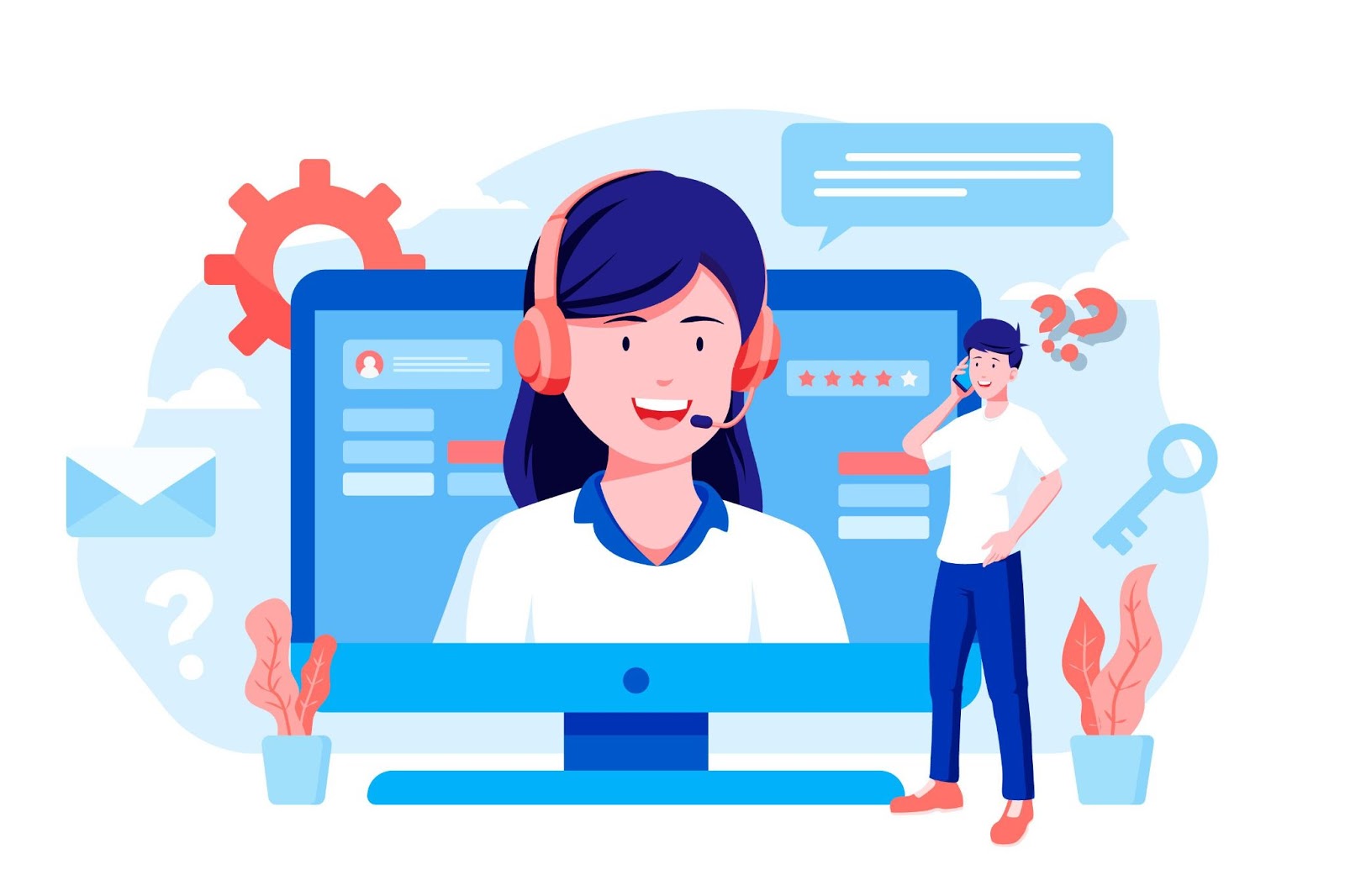 The adoption of cloud-based call center solutions amongst today’s organizations is gaining quick momentum, especially after the outbreak of the pandemic. With ever evolving business dynamics and growing customer expectations, your business needs to migrate to a technology that can efficiently optimize your IT ecosystem and ensure uninterrupted customer service while still allowing you to save on hardware setup overheads.
To combat the limitations of flexible business models and changing customer behaviours, businesses are taking the leap towards more responsive and reliable cloud based contact center operations. Cloud call center solutions are perfect for both small and medium enterprises planning to expand their business operations with minimal investment on call center technology infrastructure.
Cloud Based Call Center solutions are a network based service wherein a provider owns and operates call center technology remotely for businesses. These cloud based platforms offer tools and functionalities that enable your business to build seamless customer relationships by enhancing customer interaction and driving customer satisfaction.
If you wish to create profitable customer engagement by reducing operational cost and streamlining technology to benefit your customers, your organizational plan needs to incorporate cloud based call center solutions.
The adoption of cloud-based call center solutions amongst today’s organizations is gaining quick momentum, especially after the outbreak of the pandemic. With ever evolving business dynamics and growing customer expectations, your business needs to migrate to a technology that can efficiently optimize your IT ecosystem and ensure uninterrupted customer service while still allowing you to save on hardware setup overheads.
To combat the limitations of flexible business models and changing customer behaviours, businesses are taking the leap towards more responsive and reliable cloud based contact center operations. Cloud call center solutions are perfect for both small and medium enterprises planning to expand their business operations with minimal investment on call center technology infrastructure.
Cloud Based Call Center solutions are a network based service wherein a provider owns and operates call center technology remotely for businesses. These cloud based platforms offer tools and functionalities that enable your business to build seamless customer relationships by enhancing customer interaction and driving customer satisfaction.
If you wish to create profitable customer engagement by reducing operational cost and streamlining technology to benefit your customers, your organizational plan needs to incorporate cloud based call center solutions.
Benefits of Cloud Based Call Center Solutions
Cloud Computing is Flexible and Scalable
Cloud call center solutions offer flexibility and scalability to businesses of all sizes. They enable you to change with the changing needs of your business. For instance, you might consider hiring seasonal agents during the peak season and thus, require additional licenses. But, once the season gets over, you might again consider reducing the agent licenses that can be easily done with one click from cloud call center software unlike on-premise solutions that require you to jump some hoops to turn it around in time.Speed of Deployment
In case of cloud based call center solutions, your agents just require a good speed internet connection and a laptop to get started. On the other hand, on premise call centers need heavy infrastructure, equipment and leasing/purchasing land to place your servers. If you choose the right and reliable call center vendor, you are free to choose the suitable deployment option i.e, cloud based or hybrid depending on your varying business goals and needs.Business Continuity No Matter What
The year 2019 has reminded us that life is unpredictable. COVID-19 pandemic has completely changed the way we used to live, work, and play. Businesses that earlier were reluctant to work from home have been working remotely since the deadly disease outbreak. Thanks to the Cloud contact solution providers for making this transition smooth and easy! With cloud call center solutions by your side, you can ensure business continuity despite extreme weather conditions and natural disasters with no to minimal down time. These cloud based software solutions are particularly helpful for small and medium enterprises that lack requisite resources and expertise to manage everything on site while still ensuring a sound customer experience.Holistic Integrations
Contact centers generally depend on multiple software systems like customer relationship management, helpdesk tickets, and call script generators. It can be overwhelming to integrate data from these systems to your conventional call center system. With cloud based software you get the benefit of one click integration along with dozens of leading business tools. Thus , cloud based call center solutions ensure reduction in data redundancy and maximised productivity and efficiency. Under a holistic integration system, you can easily access multiple systems from a single location, boosting your data driven decision making power.Increased Productivity and Reduced Operational Cost
Cloud based contact centers enable agents to work with a single integrated dashboard that helps them to make effective decisions reducing turnover. Apart from increasing productivity, one of the vital goals of any profit making business is to reduce operational costs and increase return on investment. Cloud computing fulfills all of these purposes by significantly cutting down the expenditure you incur on hardware and other infrastructural requirements. Also, with cloud based call center solutions you only pay for what you use, that's the benefit of a subscription model.Real Time Data Visibility
Performance tracking is one of the biggest challenges that you face when your agents are working from different locations. Advanced call center software solutions allow you to monitor the customer interaction quality by barging, or whispering on a live call. This way you can help agents to improvise their task and evaluate their performance. The supervisors can also monitor real time call center metrics through live dashboards such as the number of agents available, the call volume, customers in the queue, and more. Along with live dashboards, the supervisors are also outfitted with contact center reports and all the requisite information needed to make valuable decisions with virtual agents.Conclusion
You need to adopt cloud call center technology to stay ahead of competitive clutter. Cloud-based call center solutions offer a high level of agility, availability, and transformational capabilities. As a result, you will experience higher uptime, reduced customer issues, and better ROI. What matters the most for organizations is choosing the right cloud call center solution provider to achieve your business goals. -
Why Should You Ideally Use Cloud Call Center Software
Is your call center still running on legacy on premise call center software and technology? Are you not able to add new channels of communication like SMS or Facebook Messenger or instantly update your IVR phone menu? Is your communication technology working against you? Do you feel the pain of your communication systems impediments? If the answer to any of the above questions is yes, then you need to optimize your existing IT ecosystem and migrate to a technology that ensures seamless customer experience by exceeding their expectations. Today, with the adoption of cloud technology picking up pace, businesses are realizing the potential benefits of switching to cloud based call centers in their particular industry. If you are still maintaining your critical customer data using an on-premise software system, you are missing out and need to replace it with a cloud based call center software. To overcome the lacunae of paralized on-premise solutions, your business needs to take the leap towards a more reliable, cost effective, convenient, and responsive call center provider. Organisations are choosing cloud based call centers to fulfill their changing business goals. Some of the top few reasons that contribute to the success of cloud call centers include improved profitability, better security, flexibility in business operations, scalability, integrations, real time monitoring, speed of deployment etc. In this blog, we will briefly discuss a few of the reasons to choose cloud call center software for your business. Before moving further, let’s just understand the meaning of cloud call center software.What is Cloud Call Center Software?
Cloud call center software serves as a central platform that handles all your inbound and outbound telephony operations of your business. Key features include:- Servers and software hosted in a cloud data center
- Telephony is available over the internet
- Campaign, contact, lead and support workflows are fully integrated with telephony
- The whole stack is browser based and your callers can work from anywhere
Top 5 Reasons To Use Cloud Call Center Software
Scalability
Cloud call center software enables you to scale up or down with fluctuating business needs. This simply means that you can easily add agents without investing heavily on new hardware systems when your demand goes up, and you don’t have wasted hardware resources when demand goes down. Additionally you can also be scalable as you can have agents work remotely. You do not have to plan office space for peak usage which happens once in a while, you can design for a normal load and allow peak staff to overflow to work from home. Read on to know more about the scalability and business continuity benefits of cloud computing.Feature Rich and Easy Integrations
Most legacy call center software required a mix and match approach of integrating telephony with CRM’s, ticketing systems, lead management systems and other custom developed software. A Cloud Call Center Solution of today must provide all this functionality within to allow you and your agents to start working from day one without struggling with having to find all these in different solutions. The Cloud Call Center must have great telephony and great features so that you can make it work for your business in your way, rather than having to bend to the workflows that are built into the system. When the feature set of the Cloud Call Center doesn't quite match your needs, it should expose APIs and pre-set integrations so that you can reduce data exchange and data discrepancy issues. This way, your call center agents will be able to have more meaningful and quality customer interactions, and enable managers to monitor agent performance which in turn will lead to high productivity levels.Remote Agents Work Better with Remote Monitoring
With cloud call center software, you can work from anywhere, and at any time. The flexibility of working remotely comes along with cloud call center software. They not only allow call center agents to work from remote locations but also enable supervisors to track performance and monitor overall business operations. When you use cloud call center software, your call center managers are able to:- Live monitor agents that are logged in, on call or on break
- Listen, whisper or barge into live calls so you can ensure that agents are sending the right messages with the right tone
- Track performance of agents with great reports that show exactly what they did in detail and in summary. These reports should allow you to listen to call recordings for historical purposes
- Track queues and capacity of agents against the workload of queues for inbound calls
Enable Omni-Channel Communication
If you are considering investing in a cloud call center software, opt for the one that has provision for adding communication channels. Doing this will allow you to offer a preferred communication channel to your customer. For instance, initially you may start with call, email, and chat but later might feel the need of adding other social platforms like Whatsapp, Twitter, Facebook and Google’s business messages, and Facebook to meet your growing customer’s communication needs. Therefore, it’s always a good idea to buy an omnichannel software that strengthens your communication relationships with your customers.Quick Updates & Faster Implementation
Legacy call center software takes time to implement and deploy as it is installed on the local server. Staying abreast with the latest upgrades and innovations is difficult and expensive too. On the other hand, setting up cloud-based call center solutions is much faster as you can access the software online. It means you can get your call center up and running quickly, and your call center agents can make calls and have conversations across diverse digital platforms. You can make this implementation process smooth by taking the help of vendors that sell cloud-based call center software. They offer implementation services that will make implementation simplified and pain-free for you.The Bottom Line
Cloud based call center solutions add convenience, operational efficiency, and great functionality to your call center business. With the best of breed software powered by cloud technology, you can easily drive up the efficiency of all operations at your call center. In order to stay abreast with the technological advancement in communication channels, you need to embrace the power of cloud call center solutions to not only cater to your customer’s present needs but meeting their future requirements as well. -
5 Ways to Improve Efficiency of Your Call Center Operations
You may wonder who resorts to a call center for grievance redressal when you can contact companies via email, texting, social media, and web chats. But, the reality is different. Studies indicated that more than 50% of the customers with queries still prefer phone calls to reach out to customer care agents as they feel that they are heard patiently and given solutions quickly. This is the perfect time to win the heart of your customers by offering them reliable and instant service on their preferred platform or channel, which indicates your call center operational efficiency needs to be at its top. Otherwise, you end up adding a dissatisfied customer (which, of course, you don't want). Let's understand the meaning of the call center operational efficiency.Let’s Define “Efficiency” for Call Centers?
Efficiency or Operational efficiency are the key metrics that define what output you get out of what you invest. Whatever output you gain from your business in terms of profit, revenue, or cash, satisfaction by investing resources like people, time, hardware, software and other capital and operational costs. Your process becomes more efficient when you get the same output metric while lowering cost and via reduced effort. More process efficiency would mean more profitability. Your focus should be on creating operational efficiencies and driving revenue growth. If you are able to make processes run swiftly, it will translate into improving customer experiences and bringing positive business results.Quick Tips to Improve Efficiency of Your Call Center
We've compiled the top 5 ways to improve efficiency of your call center that will help you gain customer satisfaction and reap profits.To Gain Efficiency You Need a Framework
If you have developed a QA framework for your call center, then congratulations! You are on the right path towards enhancing customer experience and building a good brand image. A call center's success and its productivity depend on how accurately you examine agent performance and use that information to boost customer experience. With the help of a QA framework, you can collaborate effectively with your team, evaluate their performance and training, better understand the customer experience, and ultimately enhance operational efficiency. What's important here is that you must collect data using the advanced technology and relevant systems to see desired results. If you are aiming to see good efficiency in your call center operations, there are certain questions you need to find answers for:- Who determines quality? Your customers, leadership, regulators, etc.?
- Which outcomes are you eyeing? Performance, innovation, compliance?
- What inputs are you referring to? Evaluations, analytics, surveys, or self-scoring?
- What drives quality? Systems, processes, self-managed, and needs?
- What are the metrics to measure success? Behaviors, NPS, Metrics, Feedback?
- How is quality improved?
Keep Net Promoter Score (NPS) as a Key Evaluation Indicator
As mentioned above - Offering positive customer experiences is the primary goal of call center operations. And to reach your goal, you need to find out if you are moving in the right direction to satisfy your customers. Here's where Net Promoter Score comes into the picture. It is the benchmark to measure customer loyalty and experience, which helps you to manage your call center operations strategically and tactically. You should ideally focus on getting a good score and converting maximum customers into your brand advocates. If you are able to achieve this, you will easily be able to surpass your competition and boost revenue. Here are some steps that you can take to improve NPS.- Listen to conversations carefully and examine each customer call to find out if things are at the right place.
- Keep an eye on your customers and take their feedback to know if they are Promoters, Passives, or Detractors.
- Provide training to poor performers and make them outperformers.
- Set attainable goals that are measurable and make sure to deliver consistent service.
- Last and most important, don't forget to add the quality assurance framework that we mentioned above.
Give Your Agents Tools and Information To Succeed
Call center agents mostly have to deal with outdated technologies and lack of accessibility to real-time data.Therefore, it's crucial to optimize the workflow of call center agents to hit your goals. Here's how you can optimize call center workflow.- Make an organizational chart to keep track of who is handling what, available tools, and most importantly, how enquiries are assigned.
- Decide how you are going to entertain support tickets whether on the basis of first-come and first-serve basis or channel, and customer customer basis.
- Segment customer service requests based on type: marketing, sales, etc.
- Try implementing unique approaches to improve workflow efficiencies, like entertaining responses from your customers, management, and agents.
Work on Average Handle Time (ATH) and other Important Metrics
Average Handle Time is a predominant KPI to measure call center efficiency. It measures the average time customers spend on a call, inclusive of hold time and talk time. A low AHT indicates good agent performance, but you should also consider other vital metrics to measure call center efficiency. Many call center agents find it difficult to reduce AHT as sometimes resolving queries quickly can negatively impact first call resolution, and you end up increasing repeated calls. Instead, start focusing on improving other metrics like critical business metrics, customer critical metrics, and process critical metrics. Adhering to these metrics will certainly improve call center performance.Use Self-Evaluating Performance Tools for Feedback Loops
It has been seen that empowered employees perform better and derive better job satisfaction from their jobs. They have incredible zeal to reach their goals and provide unmatched customer service. You can further help them enhance their efficiency by implementing call center agent feedback loops. Here are a few ways you can help boost your call center efficiency by creating feedback loops.- Use call center agent scorecards and link their performance metrics to your business goals. The scores will encourage them to work harder towards their goals.
- Discuss about their soft skills, compliance and outcomes. And motivate them to keep working on their lacunas.
- Who doesn't like kind words? We, humans, love to hear good things about ourselves. Apply the same trick of verbally acknowledging your employees and rewarding them with timely positive feedback or gifts. When you reward top performers, fellow call center employees will get motivated and work hard to surpass those records.



